How to Conduct and Perfect an RFM Analysis with Survey Research
How to Conduct and Perfect an RFM Analysis with Survey Research

An RFM analysis continues to remain relevant in the present day of big data and automation, despite being born in an age where direct mail was the most effective method of communication.
Although its origin traces back to 1995, the RFM analysis is still a valuable method for performing customer segmentation, building customer personas, improving marketing efficiency and executing other applications.
Thus, market researchers should develop an analysis on the RFM model, as part of their market research techniques and to understand the value of various customers.
This article explores the RFM analysis, its importance, scoring system and model, how to conduct it and how survey research completes the process.
Understanding the RFM Analysis
An acronym for recency, frequency and monetary value, RFM is a model for customer behavior segmentation. Also called RFM segmentation, this technique is used to analyze and estimate the value of a customer based on the three data points in its abbreviated title.
The idea underpinning this kind of analysis is to segment customers based on the three major factors that make up customer buying behavior.
This way, market researchers and business owners can identify which customers are regulars, big spenders and those who make one-time purchases. This kind of analysis allows businesses to distinguish between their different customers in this way, but on a larger scale.
The RFM analysis model assigns each customer numerical scores based on the three measures to provide an objective analysis of their value to a company.
The system uses a scoring system that allows businesses to identify 64 kinds of customers (more on that in a below section). The RFM system allows market researchers to segment customers by assigning them scores based on the three data points of recency, frequency and monetary value.
These scores, in turn, allow businesses to understand the value of their customers, whether they are worth pursuing and nurturing and how to better engage them.
This analysis is based on the marketing adage stating that 80% of business comes from 20% of customers, which is also known as the 80-20 rule.
As such, the RFM segmentation model provides a quantitative method for gaining a meaningful impression of customers.
Recency, Frequency and Monetary Value
Marketers and market researchers should be well-acquainted with the three data points comprising the core of the RFM model. All three of these measures are proven to be effective predictors of the various personas’ willingness to engage with the messages in different marketing campaigns.
The following explains the meaning behind each measure and their unique KPIs:
Recency
This measure deals with the following: When was the customer’s last transaction? When was the customer’s last engagement?
Recency is usually expressed in days from the last purchase as its primary metric. However, depending on the product, it may be measured in hours, weeks or years.
Customers who made a purchase recently are more likely to have a product and its brand on their minds and are also more likely to purchase or use the product again.
The KPIs of recency include:
- Date of the customer’s last purchase
- Date of the customer’s last engagement (ex: site visits, conversation with reps)
- Date of the customer’s last activity (ex: logins, in-app usage, commenting)
Frequency
Frequency is concerned with the following: How often did a customer make a purchase within a given period of time? How often did a customer visit a store?
Aside from the physical space, this measure is also used to rate activity in the digital space, such as page visits, unique number of sessions, total logged-in time, time spent on site, time spent on a page, etc.
Customers who purchased once are more inclined to purchase again. First-time customers are good targets for follow-up advertising to retain them and convert them into frequent customers.
The KPIs of frequency include:
- The number of sessions/ visits
- The number of click-throughs
- The number of conversions
Monetary Value
This value answers the following: How much money did the customer spend within a given time period? What is the total revenue generated from the customer?
Not all businesses are ecommerce, such as news sites or content sites (blogs, social media, etc.); therefore, they cannot measure monetary value much like a traditional business would. Instead, they can assign an engagement metric that they deem valuable.
Customers who spend a lot of money yield the most profit for a business. They are also more inclined to spend money in the future, more so than those who have spent less. These kinds of customers bring a high value to a business.
The KPIs of monetary value include:
- Total Revenue
- Average Order Value (AOV)
- Engagement Metrics- Useful for two-sided business models that don't directly sell products.
The importance of Conducting an RFM Analysis
An RFM analysis is crucial for businesses to conduct for a number of reasons. Firstly, it informs businesses on critical customer behaviors and allows them to build customer personas by ranking and grouping customers quantitatively.
As aforementioned, this kind of analysis helps businesses predict how willing customers will be to engage in marketing messages and new offers. However, this kind of analysis can help with several other fronts.
Conducting an RFM analysis gives businesses the opportunity to increase their sales. This is because using this data for decision-making allows them to understand how customers feel, think and shop, and most importantly, what fuels their buying decisions.
The RFM model allows businesses to support personalization efforts, which includes creating more personalized marketing campaigns or website and in-app experiences for logged-in customers. This in turn increases engagement, as it provides relevant messaging and offers to the current customer persona or group.
This helps improve upon conducting a cohort analysis along with increasing retention. In terms of the former, an RFM analysis helps provide more info of customer behavior within different cohorts. As for the latter, personalization allows companies to provide more tailored experiences and messaging — the kind that can resonate more strongly with customers, thereby retaining them, either via engagement or keeping the business on their minds.
Finally, RFM segmentation plays a role in customer retention, which is of the essence for any business. Although customer acquisition is important, retention carries even more weight for businesses, as existing customers are 50% more likely to try a business’s new product. In addition, 9% of businesses lose customers when they don't take customer retention seriously.
When products, services and experiences are personalized and engaging, customers are more likely to remain patronizing a business. Thus, the RFM model contributes to customer loyalty.
The RFM Model and Scores
The RFM model segments customers based on a scoring system.
Each data point — recency, frequency and monetary value — is typically assigned a score of 1 to 5. 1 is the lowest score, signaling a poor ranking of the data point, while 5 is the highest and signals the most positive ranking.
An RFM cell is the collection of the three values for each customer. Companies can average these values together, then sort their customers from highest to lowest to identify the value of each.
Using this scale, each customer can have a score from 111 to 555, with a total of 64 possible combinations, or 64 customer personas from just three points of data.
The scaling systems used in different companies that perform an RFM analysis will differ. Some will use a scale of 1-4, while others may elongate it to 1-10.
Examples of Personas Based on Their RFM Scores
Given the numerous customer personas that businesses can uncover after performing an RDM analysis, there are several key personas they ought to understand. These personas have critical consequences for businesses.
The following lists several major customer personas that an RFM segmentation brings to light, along with the most appropriate marketing campaign to target them with:
The Brand Champion (R=5, F=5, M=5)
This persona represents the ideal customer, as it exhibits the highest possible RFM cell, which is a representation of the 3 scores. When customers are correctly nurtured, they can become brand champions, spreading positive feedback about a business, thereby bringing more customers to a business themselves.
Marketing campaigns for this persona: exclusive offers, pre-purchase of new products, premium customer support, refer-a-friend bonus
The Loyal Customer (R=4, F=4, M=3)
Also a top-tier customer, as this persona visits or engages with a business frequently and has recently bought from them. Although their monetary value is in the mid-range, they can become a loyal customer — with the proper offers. There are several things marketers can do to increase their customer lifetime value or CLV.
Marketing campaigns for this persona: Loyalty campaigns, volume discounts, brand messaging showing the effectiveness of a product
The Possibly Alienated Customer (R=1/2, F=3/4)
This customer has been a regular at some point but has stopped buying recently, revealing a possible alienation. Their needs may have changed or they may have had a poor customer experience. Brands should nurture them back into becoming regulars, as a low recency score can quickly affect their frequency permanently.
Marketing campaigns for this persona: Customer satisfaction surveys, welcome back offers, more ads on their typical products/ services
The New Customer (R=4, F=1)
This persona has recently discovered a business and has engaged or purchased from it. They may also have been customers at some point, but stopped doing business for an interim. Businesses should foster relationship-building with this kind of customer, as they are new or possibly made a one-off purchase after an interim of no purchases/engagement.
Marketing campaigns for this persona: Email list sign-ups, introductory offers, hints, tips, useful content, social media offers
The One-Off Big Spender (R=1, F=1, M=4)
This kind of persona spends a lot of money on a one-time purchase, but then doesn’t return to the business, or does very rarely. This points to a specific need at a specific time, as they made a significant purchase, but only once. Marketers can target this persona by sending them messaging that is hyper-focused on their needs and interests.
Marketing campaigns for this persona: Upgrade and maintenance offers, new promotions, content based on their interests, surveys
The Expired Lead (R=1, F=1, M=1)
The lowest-scoring customers and least viable kinds of customers, they don’t have a significant purchase history with a business and also score low on recent interactions. Businesses should not focus marketing campaigns on this kind of customer, as they are unlikely to bring any value to the company. These are also the weakest to turn into semi-regular customers.
Marketing campaigns for this persona: Awareness-stage messaging, content marketing, automated emails, along with some of the ads used for more valuable customers.
How to Conduct an RFM Analysis with Survey Research
When it comes to performing such an analysis, survey research is not a secondary task. It is a crucial part of identifying each customer via the RFM model. This is because surveys allow market researchers to ask their target market virtually any question.
The key is having access to an online survey platform that offers deployment across all geographical areas in which your customers reside, and ensuring that only the targeted population takes part in the survey.
Given that the RFM model only uses three data points, the bulk of the survey is going to be the three questions on those measures. When conducting such a survey, businesses can also execute competitive research — by asking these questions in relation to their competitors.
This can also help obtain a general idea of how customers shop. Researchers can do so by asking their customers about recency, frequency and monetary habits in the general sense, that is, without mentioning their brand.
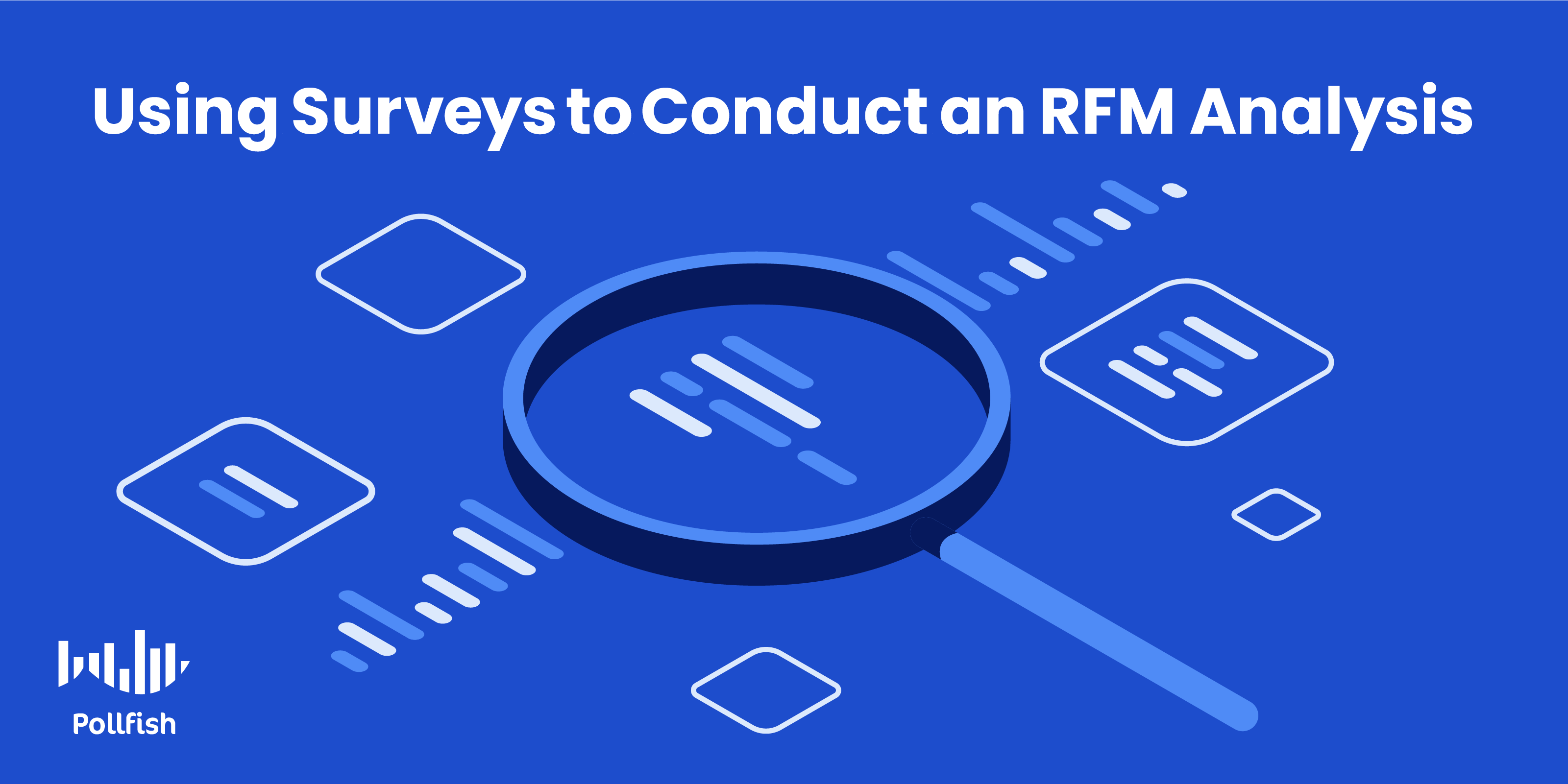
As such, they can also ask supporting questions to better understand each of the RFM data points.
The following lists major and supporting question examples for an RFM analysis in the general sense:
- RECENCY: When was the last time you bought shoes?
- Supporting questions:
- When do you intend on buying shoes again?
- Are you looking to buy shoes anytime soon?
- FREQUENCY: How often do you buy shoes?
- Supporting questions:
- How often do you buy shoes in the winter?
- Do you intend to buy more shoes in the coming month?
- Is there a specific retailer or brand you prefer, or do you buy from several?
- MONETARY VALUE: How much do you typically spend on shoes?
- Supporting questions:
- Are you willing to pay other amounts for different kinds of shoes?
- Which brands do you typically buy from?
- Is price an important factor when picking out different shoes?
Surveys provide a practical means of asking all of these questions and more. With advanced skip logic, brands can route respondents to follow-up questions based on the answer a respondent gave to a preliminary question.
Finding the Most Valuable Customers
An RFM analysis helps you to define some critical customer personas based on three major customer behaviors. But without an online survey platform, performing such an analysis becomes an almost impossible feat.
The correct online survey platform will enable businesses to reach a wide network of customers in their target market, ask them any type of questions and use artificial intelligence to stamp out low-quality answers and survey fraud.
It will also help market researchers hone in on their RFM-based customer personas with additional data. Thus, businesses ought to choose the proper online survey platform to conduct an effective RFM analysis.
How Surveys Influence Customer Buying Behavior
How Surveys Influence Customer Buying Behavior
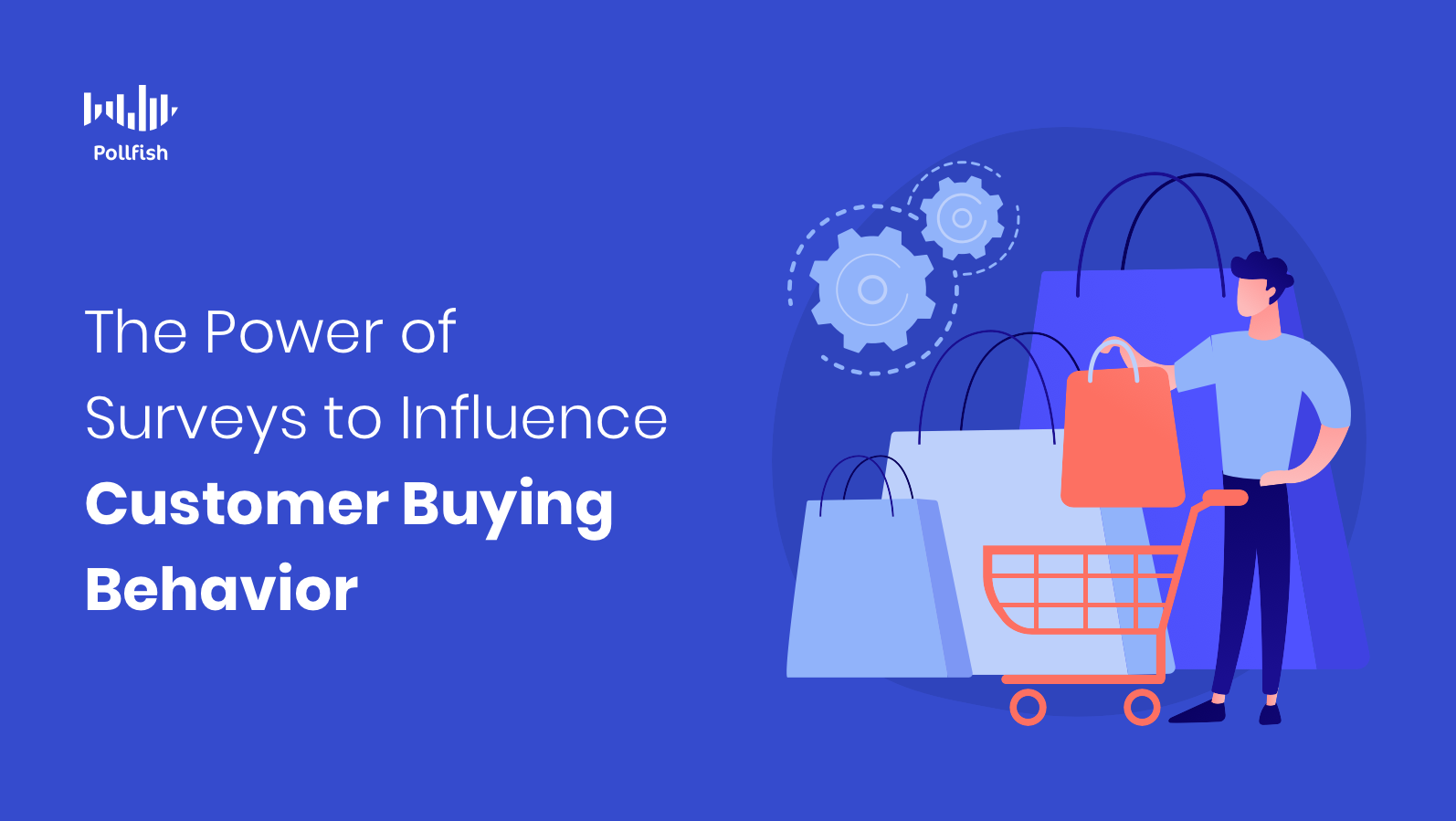
All businesses must examine their customer buying behavior in order to survive, not least if they seek to flourish. This is notably due to the direct effect this behavior has on patronage, such as sales, site visits, in-store visits, intent to purchase, customer loyalty and more.
Thus, all businesses ought to keep a close eye on their customers’ buying behaviors. There are a number of ways to do this. Market research techniques offer the most data-driven approach to understand these behaviors and a business’s target market at large.
Surveys, in particular, offer quick access into the minds of consumers, allowing businesses to study them at their whim and procure intelligence on their many facets, such as their sentiments, opinions and buying behavior.
But did you know, aside from studying customer buying behavior, surveys can also influence it? In this way, the surveys themselves act as marketing and advertising vehicles that allure customers to specific brands.
This article explores the concept of customer buying behavior, its importance, its four types and more, along with how surveys alone can influence it.
Understanding Customer Buying Behavior
As its name implies, this is a kind of customer behavior, one that is especially concerned with how customers buy, along with the actions and behaviors they take part in before purchasing.
Customer buying behavior refers to the ways in which a target market, the customers most likely to purchase from a business, acts when shopping for a product. Customer buying behavior takes into account the entire customer journey — from discovery, to nurturing, to browsing, to purchasing and possibly repurchasing.
This “behavior,” or rather, set of behaviors is shaped by personal and aided factors, along with external and environmental factors such as social climates, issues and occurrences. All of these play a role in driving customer perceptions of a brand, thereby driving their buying decisions, whether they are rational or irrational.
Buying behaviors take place both on and offline before customers make a purchase.
Given that customer buying behavior encompasses a wide breadth of interactions, such as searching for a product on a search engine and discovering a brand that sells it (SEO and SEM), engaging with a brand’s social media or reading marketing collateral, marketers have plenty of environments to observe their customer buying behaviors.
As such, marketers and market researchers study customer buying behavior to better produce marketing initiatives that influence customers to make purchases.
The Importance of Customer Buying Behavior for Businesses
This phenomenon is critical for businesses to study and especially to influence. When a brand has enough sway over its target market, it will generate more revenue, customer loyalty and a longer customer lifetime value (CLV).
When businesses fully grasp the customer buying behavior of their target market, they can intelligently conceive and carry out different marketing campaigns. In this way, understanding customer buying behavior not only guides marketing efforts, but helps avoid missteps, errors and wasting time and resources.
It is critical to examine buying behaviors, as they are not stagnant. Since the beginning of the pandemic, 48.7% of customers changed their buying behaviors, switching their purchasing preferences to the digital space. That is because they replaced products that they regularly bought at physical stores with competitors' online shops.
Additionally, in the wake of COVID-19 click and collect sales grew in the US by 60.4%, attesting to the popularity of buying items on the internet, however merging internet purchases with physical pick-ups, that is, at a store or retail hub location. This comes as a rather
Customers also change their buying behaviors in terms of brand switching. This has been documented during the pandemic, as 36% of consumers tried a new product brand in the midst of COVID, while 25% of customers switched to a private-label brand.
73% of consumers who have switched brands will continue using their products regularly, which means that they will either use the new brands alongside the brands they’ve used before, or completely replace the old brands with the new one(s).
Thus, all businesses should expect their target market to either switch or try their competitors’ products and services at some point. In this way, studying and influencing customer buying behavior largely affects customer retention and loyalty.
When businesses have a solid understanding of their target market’s buying behaviors, they can produce messaging that is better targeted, thus resonating with certain market segments. This helps improve brand equity and will generally leave customers with a better impression of a business.
Additionally, it allows companies to understand when customers typically make purchases so that companies can target their messaging accordingly and reach consumers when they are most likely to shop. For example, some businesses may observe that customers buy during the weekends or on the evenings of weekday nights. Thus, it would be apt to incorporate a new sales banner or social post during those times.
All in all, paying heed to customer shopping behaviors helps businesses on several fronts.
The Key Influences on Customer Buying Behavior
As aforesaid, there are various factors at play when it comes to influencing customer buying behavior. First off, there are the external factors, such as current events, social and political issues and other emotionally evoking happenings.
In 2018, a Harvard professor reported that emotion is one of the biggest drivers of buying behaviors and decisions in general. Thus, brands ought to study their customers’ emotions, particularly their responses to current issues.
Some customer segments may be inclined to buy from socially responsible companies: companies with business models that focus on social change via philanthropic, charitable or activism-based activities. Others may have a buying behavior influenced by such companies.
But there will always be customers who gravitate towards a brand that supports a cause or idea that they too care about. Thus, it is crucial to understand the key influences of customer buying behavior.
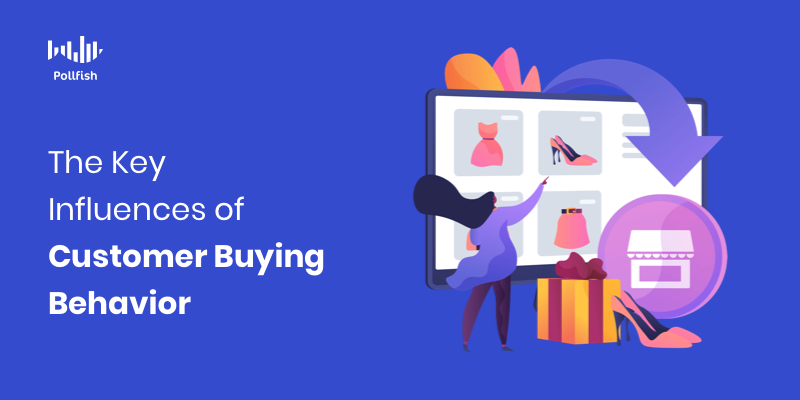
Aside from the way companies present themselves in relation to external issues, there are three other key influences on customer buying. The three other key components are:
- Rational considerations of the product and service. These include:
- Price, quality, and convenience
- Mental or cognitive factors such as product utility and value
- Irrational considerations such as feelings and desires. These include:
- Emotional, aka affective factors such as irrational considerations, which include personal beliefs
- Behavioral aspects such as
- Buying patterns
- Preferences based on routines and habits
The 4 Main Types of Customer Buying Behaviors
When customers make purchases, their buying behaviors almost always fall into at least one of four categories. These categories classify a wide range of situations that can occur in similar ways based on the behavioral aspects of the scenarios.
The following explains the four main types of customer buying behaviors:
- Complex buying behavior
- The most typical buying behavior
- This usually occurs when buyers make big purchases, such as a new vehicle or real estate.
- This type of behavior includes a high level of research and prudence before choosing a product.
- As such, this kind of behavior involves long considerations before customers make any purchase.
- This behavior stems from an instance in which a purchase will have a significant impact on a customer’s life, especially when the purchase involves risks.
- Habitual buying behavior
- This refers to customers who buy the same product repeatedly.
- Such customers manifest a high level of product loyalty.
- This involves brand loyalty, such as buying from the same bread company during each shopping trip or online visit.
- Consumers who engage in habitual buying rarely research alternative products of brands.
- They don’t look for similar brands or products as they are used to buying a particular kind (or kinds). Thus, they exhibit the most customer loyalty.
- Variety seeking buying behavior
- This behavior stands in opposition to habitual buying behavior.
- Consumers with this buying behavior look for variety because they have yet to find their favorite product.
- This kind of behavior takes shape when customers seek novelty in their would-be, go-to products.
- For example, when customers try different hair-dying brands before settling on one.
- Customers with this buying behavior carry little to no brand loyalty.
- Dissonance reducing buying behavior
- This occurs when customers are afraid to make the wrong buying decisions.
- This behavior stems from a fear of buyer’s remorse.
- It is especially prevalent in situations where customers cannot return items should they not be satisfied, or when returning products is too difficult, such as in the case of a faraway store or expensive return shipping.
- This behavior comes about when customers’ have a bad past experience with a particular product.
- This often occurs when customers spend more time comparing different aspects of a product rather than comparing different product brands.
How Surveys Influence Customer Buying Behavior
Although there are many ways businesses can study customer buying behavior, they can also take part in activities that influence their customers’ buying habits. There is also a means that offers businesses with a twofold prowess: being able to study customer buying actions and influence customer behavior as well.
The solution that offers this dual prowess is a market research survey. Surveys give businesses and market researchers access into the minds of their target market. There is a vast amount of surveys and broader survey research methods.
Businesses can run survey campaigns for all 6 of the main types of research. As such, businesses can probe their customers’ buying behaviors by deploying surveys to their target market online. They can also send surveys to specific segments of their target market.
Surveys have the ability to reveal major aspects of consumer opinions and sentiments, thereby allowing businesses to examine their buying behaviors. This is because surveys allow businesses to ask their respondents virtually anything, allowing them to better deliver their marketing messaging, images, advertising and other campaigns.
Thus, by studying customer behavior through surveys, businesses can make more informed decisions, the kind that can allow them to produce more effective marketing campaigns.
However, since surveys offer a dual power, their ability also extends to influencing customer buying.
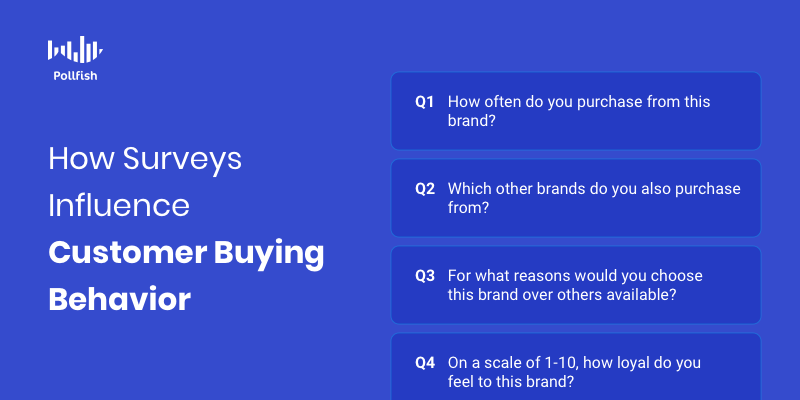
Several years ago, Harvard ran a study to discover how surveys can affect customer behavior. The results of the survey study bear good news for businesses; as it turned out, customers that were surveyed were more than as likely to open new accounts with businesses.
In addition, this study discovered that the customers who were surveyed were less than half as likely to renege on their patronage and were even more profitable than the customers who weren’t surveyed.
This study reveals that surveys have the power to present a brand in a positive light, or at the very least, bring brand awareness to a brand that target customers may otherwise not have heard of.
Thus, businesses that wish to influence their customers’ purchasing behaviors ought to conduct surveys. They must bear in mind that in order to influence their customers via surveying them, the surveys must mention the business by name. Companies must paint their brands in as positive a light as they possibly can. This includes making light of the fact that they support causes that their customers care about.
The more surveys that businesses run to study buying behaviors, the better they can present themselves in upcoming surveys to influence their customers.
Creating the Strongest Behavioral-Influencing Campaigns
Surveys are an excellent approach to reaping intelligence on customer buying behavior, as well as influencing this behavior. However, in order to maximize both efforts, businesses must use the proper online survey platform.
All online survey tools are not built with the same dashboards, capabilities and interfaces. Thus, market researchers should research the available online survey software before deciding on one platform to run all of their market research campaigns.
Given that these platforms offer a primary means of research, they must be chosen carefully. The most convenient online survey platforms will offer various capabilities, ease of use, deployment across a wide network of digital properties, including websites and apps, along with artificial intelligence and machine learning to stave off faulty answers and poor data quality.
Moreover, such a platform should offer global support, so that businesses can rely on experts to guide them with their surveys at any point of the day. A survey platform of this caliber will make it easy to both examine and influence buying behaviors.
Diving into the eNPS Survey to Improve Employee Engagement and Performance
Diving into the eNPS Survey to Improve Employee Engagement and Performance
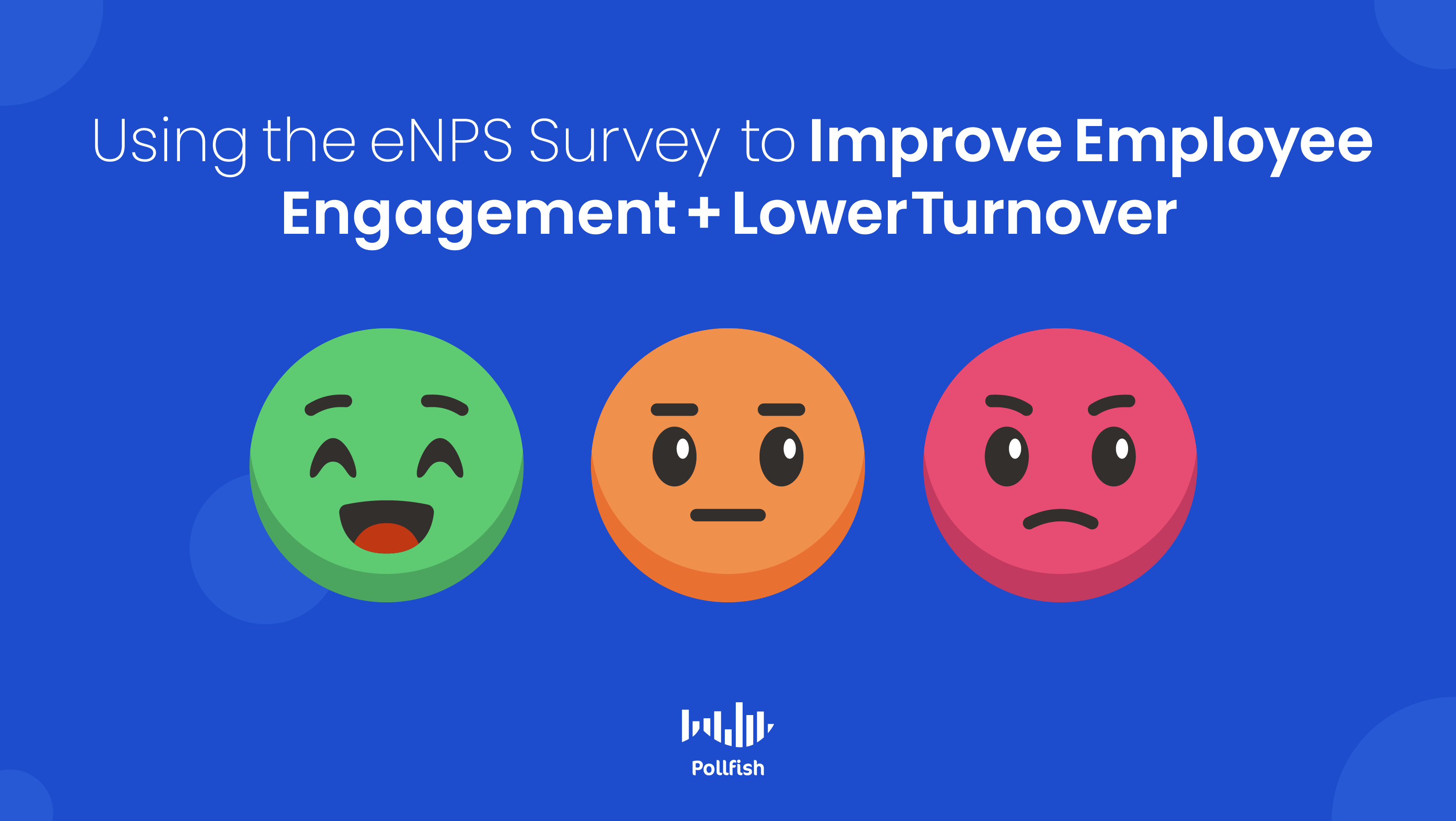
The eNPS survey, a shortened form of the Employee Engagement Survey, is a practical method for measuring employee engagement and employee satisfaction.
Employee engagement is not merely useful for lifting morale but it also yields positive business outcomes. Not only do engaged employees outperform their non-engaged counterparts, but companies with high employee engagement are 21% more profitable.
Companies with higher employee engagement also succeed in a number of other fronts. Businesses with higher employee engagement have 18% higher sales productivity and 18% less turnover.
Despite these figures, only 36% of employees are engaged in their workplace. Evidently, there is a disconnect between businesses and employees. Companies can turn this bleak statistic around, by better understanding their employees with the eNPS survey.
This article explains the eNPS survey, its importance, calculation, examples and more.
Understanding the eNPS Survey
This kind of survey is based on the premise of the NPS (Net Promoter Survey), but in relation to employees, hence its name. Designed to measure employee loyalty, this survey is a technique for gauging how willing employees are to recommend their workplace to their friends, family or peers.
While the NPS survey measures customer loyalty, the eNPS survey measures employee loyalty, and does so in the same manner — by way of asking the “ultimate question” and by implementing a scaled response, using a scale of 1-10.
The “ultimate question” is poised in the same way, but rather than focus on the company, the products or services, it focuses the inquiry in relation to the employer. Here is an example of the “ultimate question” for the eNPS survey:
On a scale of 1-10, how likely are you to recommend working at your company to a friend or acquaintance?
A few other examples:
- On a scale of 1-10, how likely are you to recommend your employer to a friend or acquaintance?
- On a scale of 1-10, how likely are you to recommend our organization/company to a friend or acquaintance?
- Considering your complete experience, how likely are you to recommend our company to a friend or acquaintance?
When employees answer this core question of the eNPS survey, their response is then tallied as an eNPS score, which reveals the sentiment and consequences behind the employees’ answers. This kind of survey has various benefits.
The Importance and Benefits of the eNPS Survey
The eNPS survey is critical for businesses of all sizes to conduct and offers various benefits. The foremost importance that this kind of survey carries is that it gives businesses a quick and easy way of obtaining an overview of employee engagement and loyalty.
This survey further reveals how much of an employee pool is content and how much of it isn’t. Therefore, it highlights which employees are happy and which aren’t, along with how to begin implementing changes for a more engaged workplace.
This survey can also be used as a time measurement metric to see how various changes throughout a quarter, year or another period of time affected employee engagement.
The Employee Net Promoter Score Survey has various benefits, such as its short format that requires little to no time from the employees to complete. It can also be expanded with follow-up questions for a more in-depth understanding of the reason behind their score. Thus, this survey allows businesses to understand why employees feel the way they do about their companies and allows them to improve on this front.
It is also simple to create and deploy, though this benefit will depend on the online survey platform businesses use.
The shortness and simplicity of this kind of survey wards off survey fatigue and prevents survey attrition. It is also easy to calculate the results and to use them for actionable insights, along with benchmarking and setting goals to manage employee engagement.
Due to the relative ease of creating this kind of survey, drawing conclusions from its single metric and its ease of participation — it is practical to apply it at continuous intervals.
All in all, the eNPS survey is a succinct and simple way of calculating a critical component of a business: its employee engagement. Understanding the levels of engagement within a workforce allows businesses to understand the reasons behind employee performance, how to improve their engagement and in turn, pave the way for employee loyalty.
How to Calculate the eNPS and its Numerical Significance
As explained in a previous section, the eNPS survey is based on its eponymous eNPS score, which is derived from a scale of 0-10 on the “ultimate question.”
After an employee answers this question based on a number on this scale, their score categorizes them as one of the three eNPS categories: the detractors, passives and promoters.
These categories represent the kinds of employees a business’s employees fall under in terms of their engagement and satisfaction with their company. Each category is based on a rang of scores, rather than just one.
The following explains the three types of eNPS employee categories:
 The Detractors
The Detractors
- Score from 0-6
- Highly dissatisfied employees
- Risk spreading negative feedback about a company
- Businesses should avoid these the most
- Businesses must work the most diligently to improve detractors’ engagement and satisfaction with their business, or else they may burnout, quit and write poor reviews.
The Passives
- Score from 7-8
- They bear neither negative nor positive feelings towards their employer
- Considered mid-range in terms of their feelings towards recommending thor company
- They are neither emotionally invested nor disengaged
- Passives require a little push to raise their satisfaction and engagement levels. They may leave lukewarm comments about their employer.
The Promoters
- Score from 9-10
- Highly satisfied and engaged employees
- They spread positive feedback about their company
- These are the most coveted employees
- These employees can become company advocates and improve the reputation of any company.
The eNPS Formula
The eNPS score is never based on one employee. Rather, it is a calculation of all the employees who took part in the survey.
As such, an eNPS score can range from -100 to 100. Scores above zero are considered decent, although company standards will vary. Generally, a score of 10-30 is considered good, and a score of 50 is excellent.
Researchers must first determine the kinds of employees that their survey respondents fall under based on the three categories of detractors, passives and promoters. Then, they can calculate their eNPS based on a particular survey study.
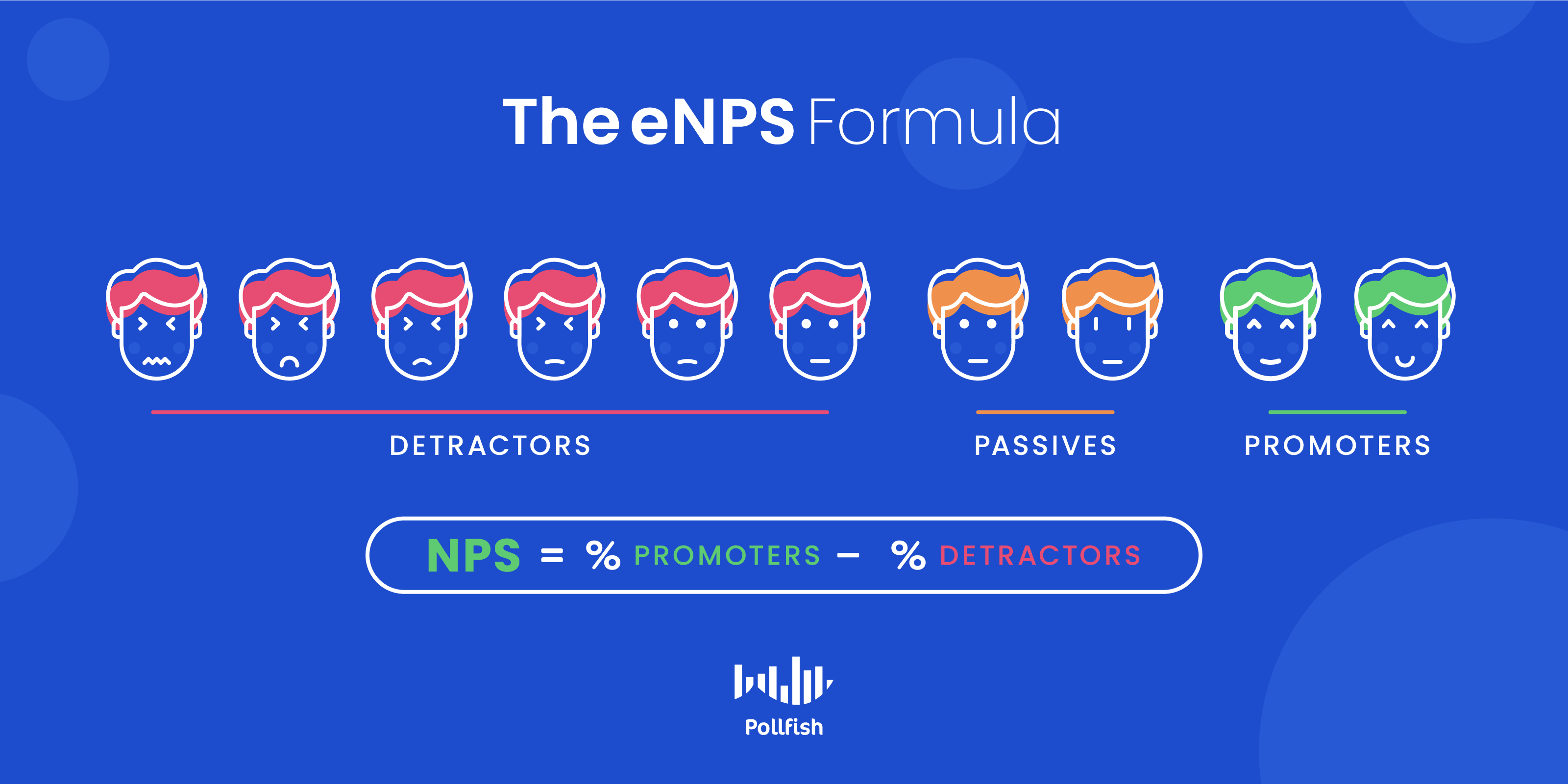
The employee Net Promoter Score uses the following calculation: the number of promoters minus the number of detractors, divided by the total number of respondents, which is thn multiplied by 100.
Ignore the passives, as they are considered neutral.
Therefore the eNPS formula is expressed as:
eNPS= (No. of Promoters – No. of Detractors) / Total Number of Respondents x 100
For example, in a company of 100 employees, 25 rated the company a 9 or 10 (they’re the promoters), 52 rated the company between 0 to 6 (they’re the detractors). Thus, the calculation becomes:
25- 52 = - 27
-27/ 100 = -0.27
-0.27 x 100 = -27%
-27 is a poor score as it is well under 0; businesses should aim to score at 30, or above 0 at the very least.
Using Survey Research to Improve the eNPS Survey Results
Regardless of its eNPS score, a business must look beyond this kind of survey to understand the reasons why employees feel a certain way towards their companies.
To remain in good keeping with employees in general, business owners should conduct an employee feedback survey regularly.
Specifically, they ought to run a pulse survey to understand their employees' sentiments, along with those of their customers and vendors. All of these players are key to sustaining a business, so they must be catered to properly. In order to do that, a business should understand all of their pain points, needs, desires and anything else that relates back to a business.
Survey research provides a strong vehicle for extracting all of these insights and not just on a quantitative basis. Surveys can provide qualitative market research, the kind that provides context and reasoning behind respondents’ answers.
Even in an eNPS survey itself, this survey can provide more than just a means for calculating the eNPS score, as businesses can use it to ask follow-up questions. These include open-ended questions that allow businesses to learn why a respondent answered in a particular way, or provided a particular score of 0-10.
Therefore, other employee surveys, such as those aforementioned, provide keen insight into the minds of employees (and customers). Access to this kind of information enables businesses to make informed decisions and effect critical changes, the kinds that improve employees’ perceptions of their employers/companies and make them more inclined to stay with their company.
In this way, survey research can improve workplaces, cut back on turnover and maintain a positive reputation of a business, especially in terms of its employee relations and general work environment.
Improving Employee Relations and Creating a Positive Work Environment
Data is vital for assessing employee engagement and perceptions at large.
Surveys allow businesses to unearth all kinds of employee perceptions in relation to a company — the kinds they would otherwise not know about. A strong online survey platform can help obtain this kind of information, along with deploying it.
There are virtually no other competent means for obtaining employee feedback in such a quick and anonymous way. One-on-one interviews, for example, are not as useful as surveys, as they strip away the anonymous element, leaving employees unable to answer as honestly as they could. These interviews are also more time-consuming than surveys.
A strong online survey platform offers a powerful solution for creating and administering an eNPS survey and facilitating survey research in general. Such a platform can carry out a vast amount of customer and employee research, allowing businesses access to critical data on many fronts. A strong online survey platform should also include artificial intelligence and quality checks, so that businesses and market researchers only get the finest quality of data.
Why a Business Needs Enterprise Survey Software for Success
Why a Business Needs Enterprise Survey Software for Success
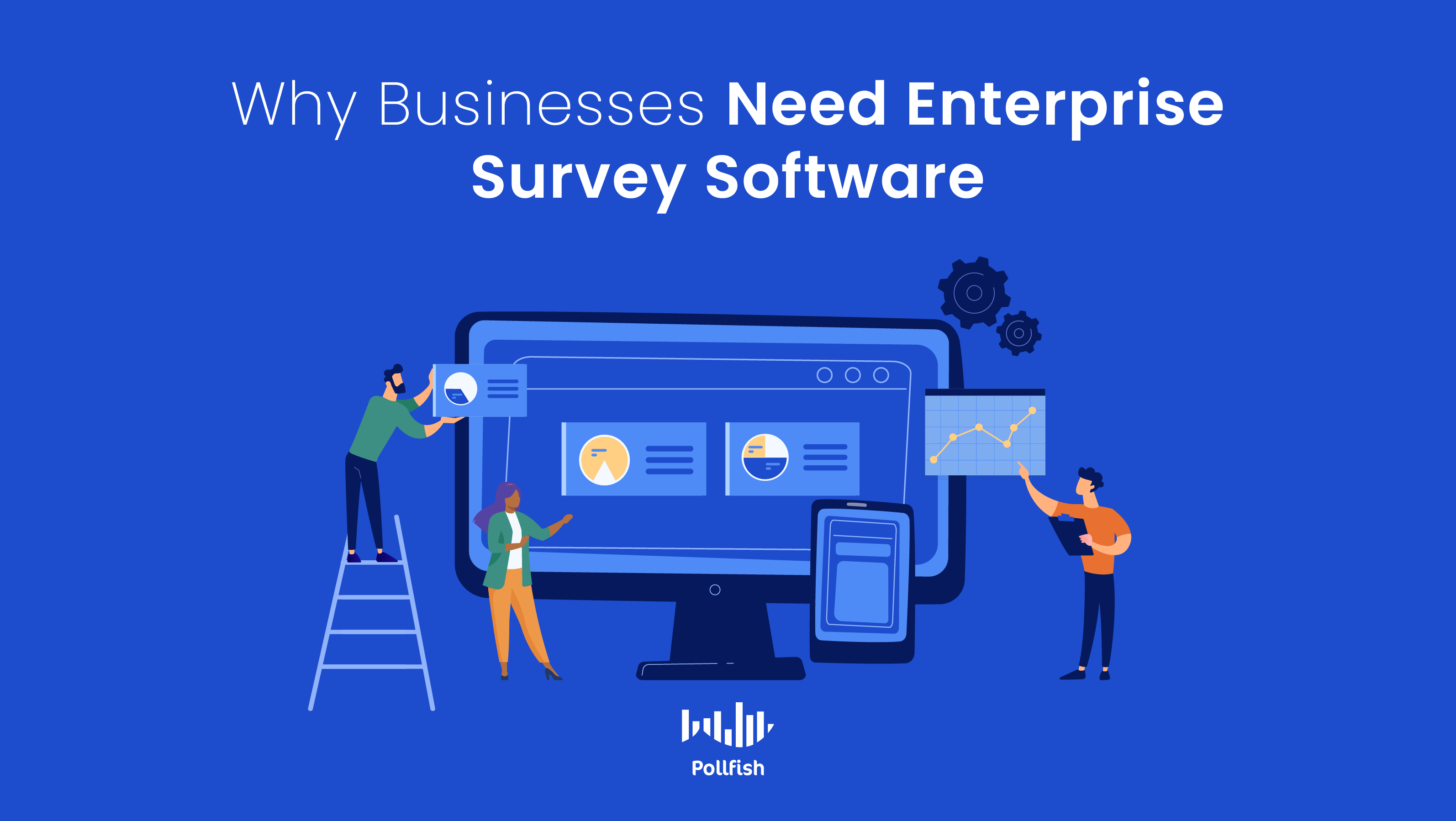
When endeavoring the various available market research techniques, a business must rely on enterprise survey software. Given that market research incites business growth and success, businesses ought to channel their growth strategies into a valuable market research tool.
However, many entrepreneurs and businesses forgo the market research process entirely, which leads to business failure. In fact, one of the top reasons that businesses fail is due to the lack of conducting market research.
Therefore, a business must invest into its market research endeavors, as they result in major improvements when it comes to growth and scaling. This is largely due to the fact that this practice involves understanding a target market — the group of customers most likely to buy from a business.
Despite the large swath of free online survey platforms, a business would benefit more from enterprise survey software.
This article explains enterprise survey software and why a business is better-suited with it instead of a basic, free survey tool.
Understanding Enterprise Survey Software
Enterprise survey software is the highest tier of survey software, offering premium functionalities, services and plans. This is to say that this kind of software does not solely refer to survey plans of the enterprise variety, although this is usually one of the options.
However, in regards to its name, it is equipped for large enterprises, although businesses of any size can benefit from it. Unlike a basic survey platform, which offers free services, enterprise survey software provides far greater and powerful survey campaign-building.
Some providers of this kind of software may offer free versions, which are limited iterations of it, meant to give researchers a sample of the software. Others may offer a freemium version, that is, a free version with premium chargers for supplemental features.
Businesses that strongly rely on market research, or intend to gain firsthand insights on their target market or any target population will need to use enterprise survey software. This way, they will have the leeway to tailor their surveys entirely to their likely and send them to the appropriate audiences.
How Enterprise Survey Software Differs from a Basic Online Survey Platform
Enterprise survey software maintains several differences from those of a basic, standard or free online survey platform. All of these differences render enterprise software as the superior option, as each functionality and service carries an advantage in the market research process.
Here are some of the major ways in which this kind of software differs from its free, standard or basic counterparts.
- Mobile-first surveys
- While most companies claim to be mobile-first, most survey software is not ideal for mobile usage, as some question formats are simply not designed for the mobile experience.
- Enterprise survey software uses a mobile-first approach to ensure easy usage of surveys, the inclusion of the questions you’d see on desktop and more survey incentives offered in native apps (from partner publishers of the platform).
- First-Rate Quality checks
- This kind of software is usually equipped with quality checks to ensure only the highest quality of data is funneled into the surveys’ results.
- Checks that avoid survey fraud
- Multiple layers of quality checks to avoid respondents who don’t pay attention to questions.
- Random Device Engagement (RDE)

- A method of randomization and iteration during survey deployment, in which respondents are extracted from their natural digital environments rather than being pre-recruited.
- River sampling software cannot monitor or track respondents, thus cannot avoid duplicate surveys and other fraudulent activities that skew the data.
- Provides respondent verification: checks on duplicate respondent IDs via their IP or MAC addresses, Google Advertising and mobile device identifiers.
- AI and machine learning
- Provides automated quality checks, so no post-survey manual labor is required.
- Quickens the survey sampling process while filtering through and disqualifying sub-par and low-quality data.
- Removes bots
- Disqualifies those who don’t complete their surveys or provide gibberish answers, hasty answers or flatlining
- A global support network
- Enterprise survey software providers have global tech support employees working 24 hours, so that researchers are never left without a helping hand.
- Supports global audiences with round-the-clock assistance and survey available in 46 languages.
- An exhaustive survey platform experience
- The most recognizable and clear-cut distinction between free and enterprise survey software, since the former offers a limited version of what would be a fortified system.
- Offers a wide variety of questionnaire functionalities: question types, predefined answers, batch answers, advanced skip logic, adding media to questions, recalling information, carrying forward answers
- A robust system for all
- Designed to be used for the democratization of data; all team members should easily access the insights and run surveys
- Allows you to make your own survey in 3 easy steps
- Enhanced dashboard and data visualizations
- Results are available in various formats: charts, graphs, Excel files, SPSS, crosstabs and more
- Clearly laid out demographics filters and data pertaining to demographics and screening conditions
- SaaS integrations and agile data
- Integrations with the main dashboard and an external one to reap the capabilities of more than one software provide
- Provides agile data, a system that ensures smooth collaborations across systems and speed to insights
- Data Security and compliance
- Adhering to all data privacy legislation, including the GDPR
- Researchers, publishers and respondents can make data requests in regards to personal data, so as to verify that they are comfortable with the data they provide.
- Specific request types include:
- Consent Withdrawal
- Access request
- Rectification of personal data
- Erasure of personal data
- Restriction of processing of personal data
- Personal data portability request
- Objection to the processing of personal data
When to Use Enterprise Survey Software
There are various points at which businesses ought to consult and consolidate with enterprise survey software into their market research endeavors. Whether you begin a new campaign or have gathered secondary research on a topic, it is best to choose enterprise survey software over standard survey platforms.
Why? A business cannot wait to gain results, let alone market research insights to drive such results. A basic survey platform lacks on a multitude of fronts, many of which are divulged in the section describing how this software differs from the enterprise kind.
Additionally, free survey software does not have the capacity to use multiple audiences per survey, nor can it gain a large volume of respondents per survey. This kind of software is therefore far less powerful and this will show in the results.
This is because the results will not offer the same kind of quality in the data, be it from the way respondents are extracted or their responses themselves.
Enterprise-grade software creates enterprise-grade surveys and survey campaigns. Thus, they are far more useful and reliable for any market research campaign, whether you seek to study a particular segment or your target market.
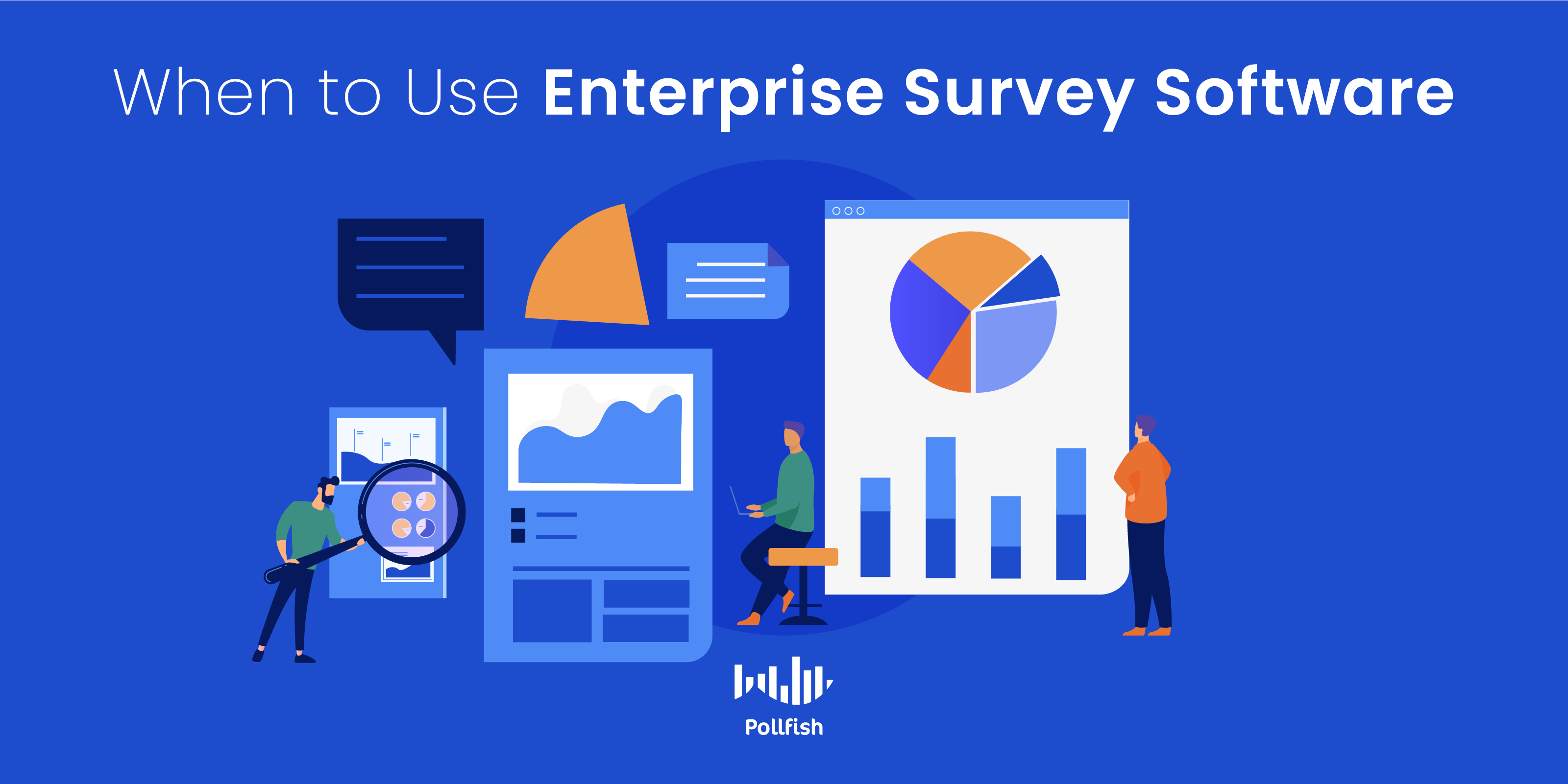 As such, businesses should rely on this kind of software at any point in their market research needs. This breed of software handles the following with ease:
As such, businesses should rely on this kind of software at any point in their market research needs. This breed of software handles the following with ease:
- Create a complex system of data based on answers and audience types
- Organize complex data into digestible formats
- Parse through responses and create test questions to assure respondents are paying attention
- Create a robust system of visualizations and analytics
- Complete surveys according to all their preset quota in a small window of time
Finding the Correct Online Survey Platform
It has become progressively more important to understand your target market in order to foster customer loyalty and retention. With stiff competition and continuous innovations, businesses must know their customer base inside-out in order to please it.
They can achieve this with the correct online survey platform, so long as it is built on enterprise survey software. This kind of software can level up any research campaign efficiently, reducing the amount of manpower, labor and resources that lower quality software would require.
As such, businesses ought to settle on a single platform in order to centralize their data and create an easy point of reference. This will require them to check just one platform to choose respondents, deploy surveys, create surveys, analyze results and take part in data-driven decision-making or DDM.
How to Conduct SaaS Market Research Like a Pro
How to Conduct SaaS Market Research Like a Pro
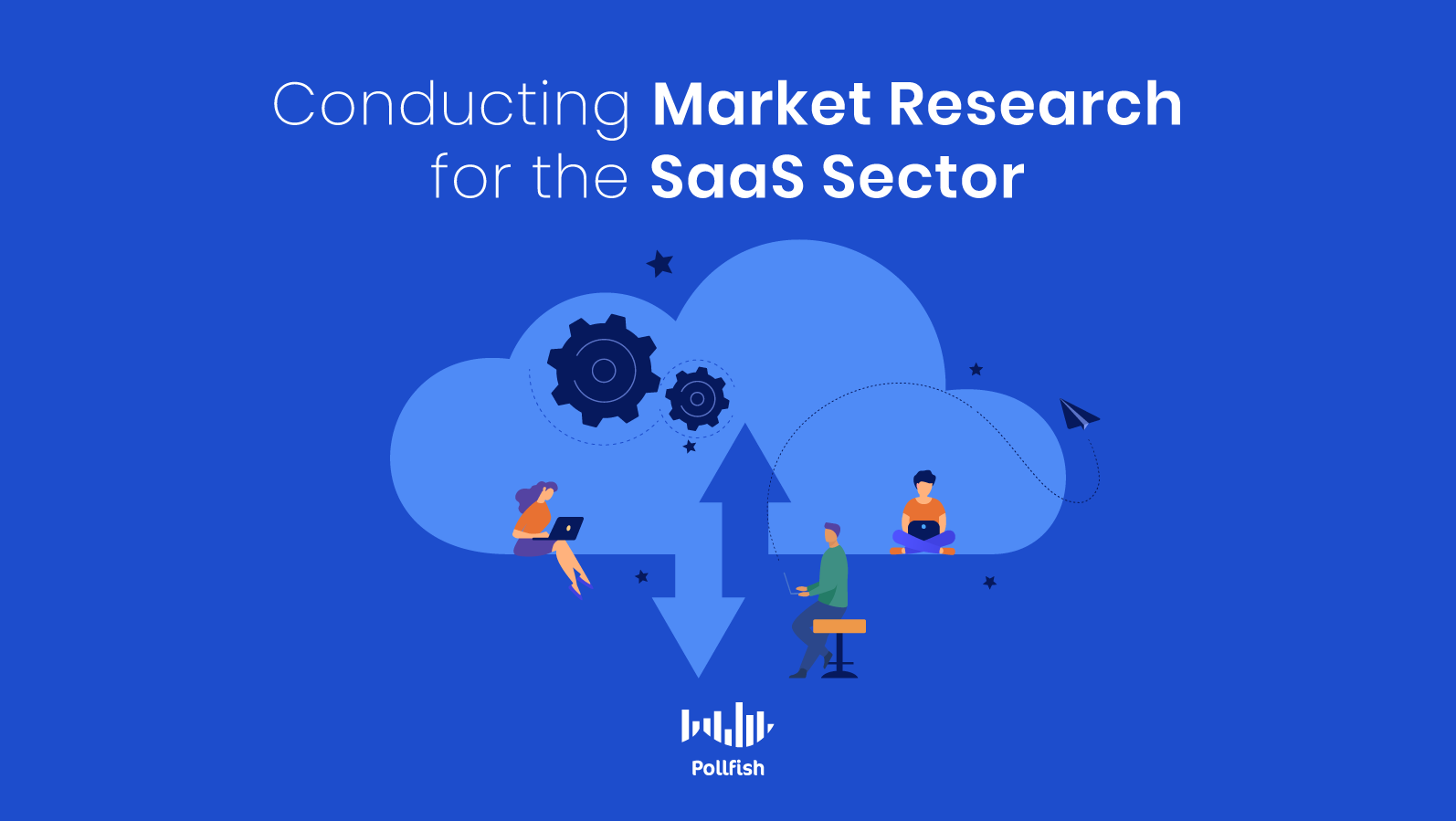
Conducting SaaS market research is a requisite for business owners, market researchers and marketers who seek business success in the competitive landscape of cloud services.
SaaS remains a booming industry, with upward trends forecasting it to amass $832.1 billion by 2025 in revenue by 2025.
Clearly on the rise, the SaaS industry has surpassed all other cloud services in revenue, including Cloud Application Infrastructure Services (PaaS), Cloud Business Process Service (BPaaS) and others.
This is because all sectors are seeing both SaaS innovations and the adoption of SaaS solutions. The Covid-19 pandemic has contributed to the dominance and growth of SaaS, as SaaS applications bolster remote working, cutting back on the need to be present in in-person meetings and other work gatherings.
This article explains SaaS market research, allowing professionals of all backgrounds to conduct it to stay well-informed and competitive.
Defining SaaS Market Research
SaaS market research refers to all the market research techniques used to extract up-to-date information on the Software as a Service space, a market of its own.
SaaS does not merely refer to software companies; rather it is a cloud-based service in which applications are run online, eliminating the need to download software onto a desktop or business network. This kind of convenience gave rise to accessibility, operational ease and accessibility, which has largely contributed to its growth and popularity.
To remain in good standing in an increasingly competitive industry, all SaaS companies must conduct market research. However, it is not just the businesses in this market that must conduct SaaS market research.
All businesses that use SaaS products should perform market research on the SaaS market to ensure that they are using the most productive and cost-efficient product.
Market research in this space involves secondary and primary research on the overall industry, along with its changes, trends, target market and key actors — the competitors of a business.
How SaaS Market Research Differs from Technology Market Research
Given that SaaS is a market of its own, it should not be conflated with technology market research, which refers to market research on the overarching tech space. The technology sector is composed of hardware, software and IT services subsectors.
The SaaS market refers to SaaS companies alone, however, they too make up the broader landscape of technology, as they use a kind of technology.
SaaS can run contrary to IT, which can represent hardware and infrastructure, whereas SaaS is solely cloud-based. IT professionals often use SaaS products for a wide range of purposes including governance and operations.
Therefore, IT professionals and providers can benefit from conducting SaaS market research, whereas, SaaS professionals may not need to perform technology market research, as their needs are specifically within the SaaS space.
Secondary Sources for SaaS Market Research
Before conducting primary research, market researchers ought to begin with a general status of the SaaS industry. Secondary research is the ideal means for this, as it covers key information on various aspects of the industry. Best of all, you don’t have to conduct it yourself.
Bear in mind, you should check for research that is as up-to-date as possible, as industries are in a continuous state of change and SaaS is no exception.
If you are not a researcher for a SaaS company, you can still benefit from conducting secondary SaaS research. For example, if you need to justify using a SaaS product for your business, conducting market research can help you do so by providing key stats, figures and facts. These can help you form a business case to purchase a SaaS product for a business you work for.
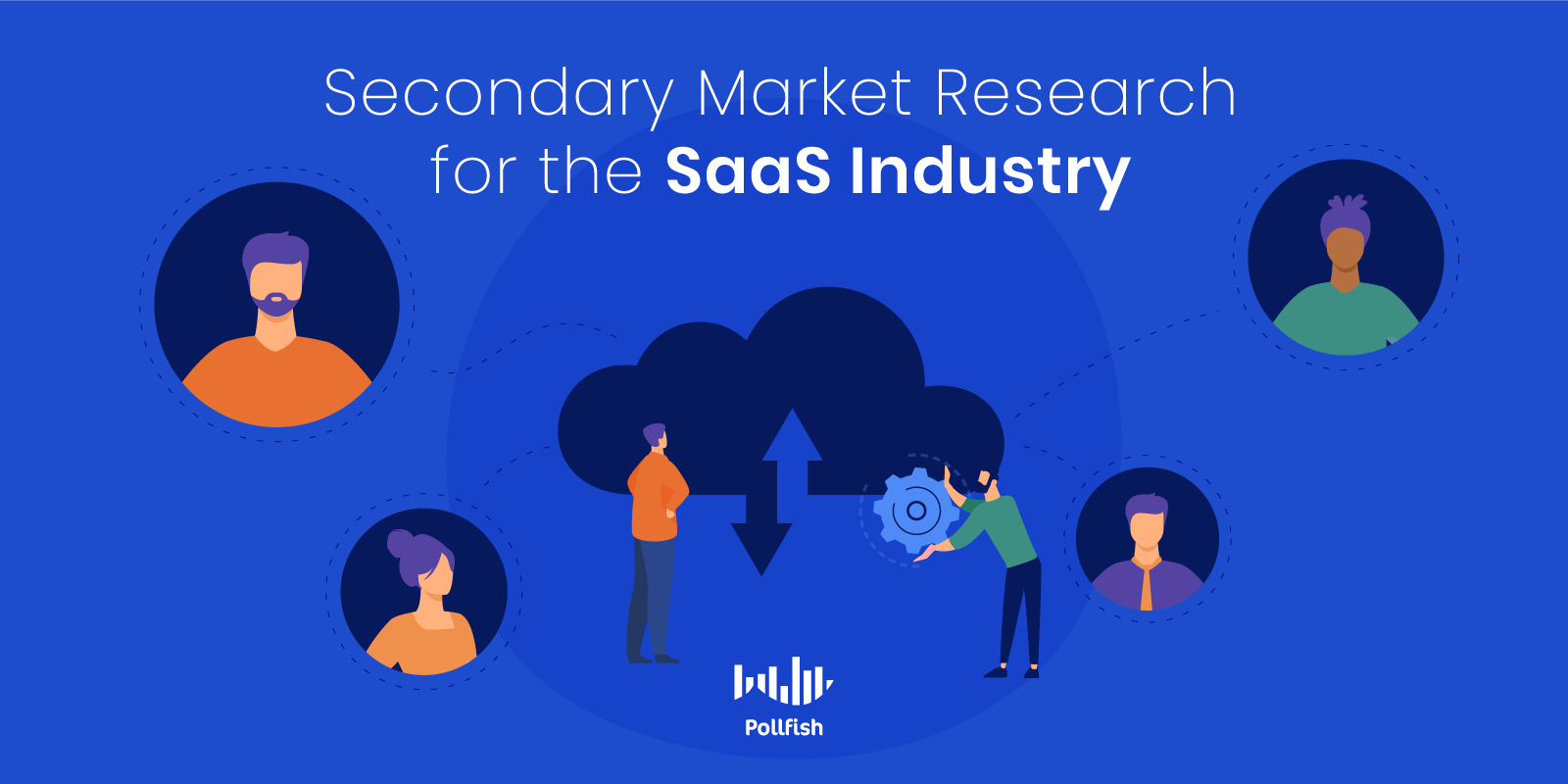
The following provides critical secondary resources for SaaS market research:
- SaaS End User Spending Worldwide Report (2009-2022)
- A data visualization from Statista on the growth of user spending in the SaaS sector in a 13-year period.
- A statistical overview of the state of the industry in terms of spending.
- 50 Biggest Public SaaS Companies in the US
- Companies presented via tier market cap
- Updated weekly
- The page also provides the highlights of the SaaS industry from the previous year.
- SaaS Trends and Growth Projections 2021
- A page rich with various statistics on the trends and changes in the SaaS space.
- Several stats explain the needs of the industry, invaluable advice for keeping your SaaS afloat. Ex: Half of all SaaS companies rely on user-based pricing for profit.
- Marketing Publications Geared towards SaaS
- Bent on exploring marketing strategies to reach the specific target markets in SaaS.
- Ex: How SaaS Marketing is Different
- Ex: Growth Marketing Strategies for SaaS Products
- Competitive Analysis
- Rounding up competitors via keyword searches on SaaS products.
- News sites that feature press releases from competitors
Primary Sources for SaaS Market Research
While secondary resources provide utility for market analysis, competitive analysis and trends, primary resources allow you to form a deep read of the people who keep your business in business: your target market.
This is because, when you conduct primary research, you are equipped with asking any inquiry you desire, a feat not possible with secondary sources alone. While they are necessary to analyze, they will not answer your specific questions — at least not all of them.
You’ll find that in some instances, you may even study your competitors firsthand.
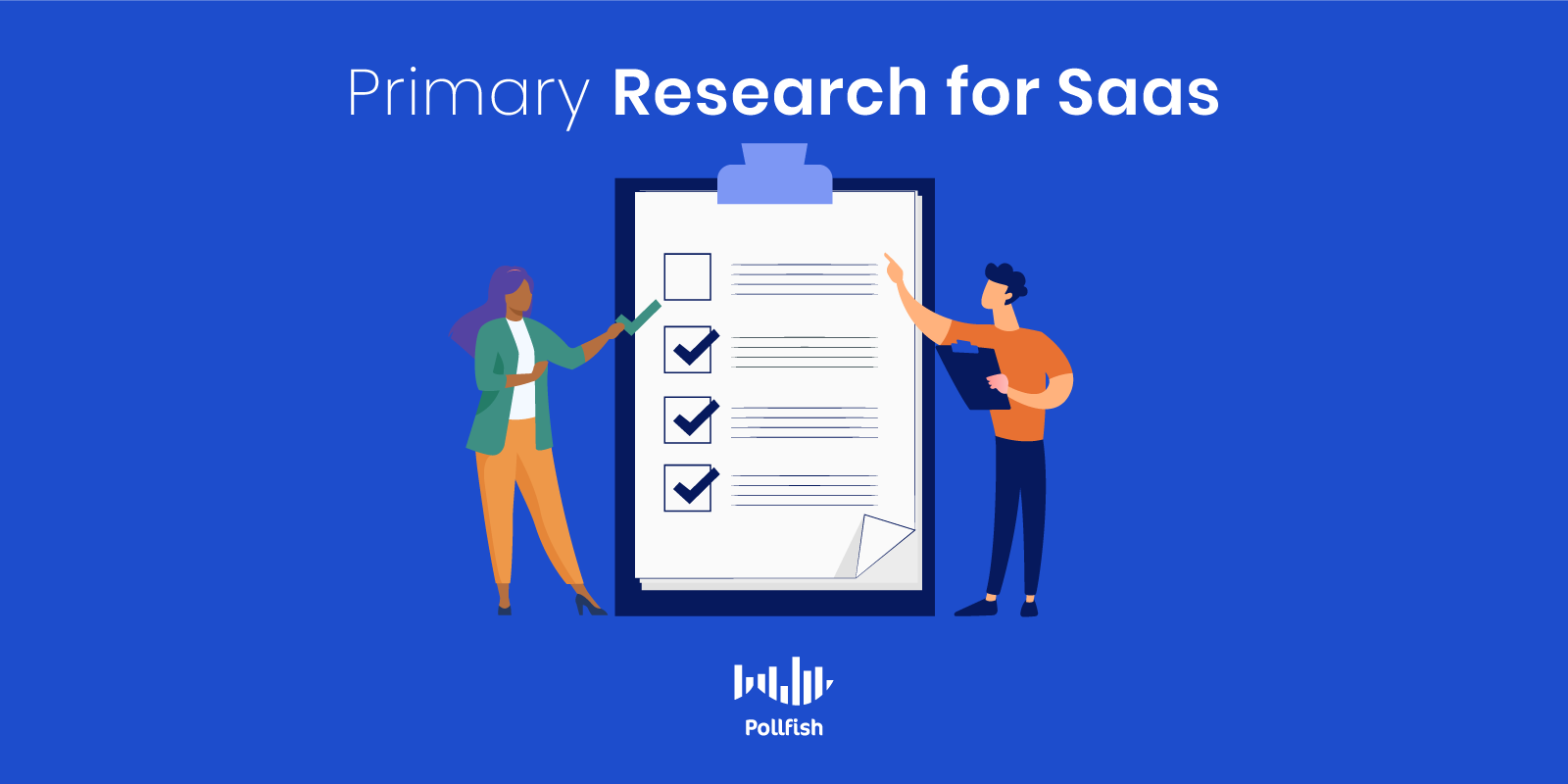
The following provides critical secondary resources for SaaS market research:
- Focus Group
- Provides s group discussion on topics with moderation from a host
- Offers an intimate setting, as it involves no more than 6-10 participants
- One-on-one interviews
- The most intimate kind of primary research
- Can be difficult to find participants, even in the age of Zoom meetings
- Direct talks with competitors
- Via competitors chats, along with emails and phone calls as their prospects
- Require stealth in order to extract information without revealing yourself as a competitor
- Customer Development
- The mid-section of the lean startup model
- A structure used to confirm that a product satisfies the needs of a target market.
- Dictates how startups must form and be managed, to effectively launch a product.
- Online surveys
- Can be deployed to a massive network
- Allow for respondent anonymity
- Can be set in a wide variety of manners such as the examples below and many more
- Allow you to ask both quantitative and qualitative questions in a number of formats
Excelling in the SaaS Space In Spite of Stiff Competition
Whether you work for a startup or a long-established SaaS business, your company can benefit from conducting SaaS market research. This task is designed to be performed periodically, as technology moves at the speed of light, taking its customer needs and overall industry with it.
To stay ahead of the curve and offer a valuable product and customer experience, you should invest in primary and secondary resources alike. As aforementioned, certain secondary sources are free, while others aren’t.
Primary sources are seldom free, unless you manage to land a complimentary interview, or pose as a prospect on chats, emails and phone calls with competitors.
However, they are often the most insightful, as it put the researcher at the reins of the research, allowing them to ask any question they desire for a market research campaign. An online survey tool is one of the most potent means for garnering primary research, as it enables researchers to create various survey types and distribute them to relevant respondents. A proper online survey platform will deploy surveys to a wide network of popular websites and apps, offer random survey sampling methods and a host of other features to facilitate market research.
How to Reach the Correct Target Market Sample to Understand Your Customers
How to Reach the Correct Target Market Sample to Understand Your Customers

A target market sample to market research is what a target market is to a business: of critical importance. This is because market researchers must conduct research on the correct sample of the population.
When it comes to business, this sample is largely made up of a business’s target market, i.e., the segment of the population most likely to buy from the business. In order to build effective survey studies and perform valuable market research, you need to specifically examine the target market sample.
Finding this sample can be difficult, let alone contacting it. This article explains the concept of the target market sample, including how to properly determine its members and reach out to them for your market research needs.
Defining a Target Market Sample
A target market sample is a kind of market research sample; this concept denotes a group of people who participate in your study, representing an entire targeted population.
A target market sample is a specific kind of market research sample. As its name implies, it is a sample that represents your target market, as it is made of the people in your target market. If you do not know how to identify your target market, conducting market research is the best way to accurately determine it.
In particular, effective survey studies can help you determine the members of this group. You can further divide the group into specific segments by way of market segmentation. While this practice is a critical subset in marketing, it too can be conducted via market research, including survey research as a primary method.
A target market sample works symbiotically with market research, which is to say that one relies on the other to achieve its best performance. This is due to the fact that you need to be acquainted with this sample, as learning more about it is crucial for your market research.
Concurrently, performing market research correctly will help you define your target market sample, allowing you to cater to this group correctly, which in turn will increase sales and profits.
The Importance of the Target Market Sample in Market Research
As aforementioned, a target market sample and market research share a symbiotic relationship. A target market sample is critical to market research on several other grounds. First off, it is used in both probability and non-probability sampling.
These are the two major sampling sources in survey sampling methods along with other market research methods. For example, you ought to conduct studies on your target market sample during other primary research such as interviews, VoC programs and focus groups, along with secondary research like trade publications, statistics providers and verticalized websites.
This group is not merely applicable to these forms of research; rather it is necessary. Here are several ways that prove the importance of garnering and studying your target market sample.
- Before studying your target market, you must ensure that you are reaching the correct people. A target market sample comprises them.
- Wasted efforts are too costly and time-consuming, thus, you have to be in touch with your target market.
- You need to understand your customer base for all marketing and business endeavors.
- Understanding your target market samples assures that you reach the correct people for future research and non-research undertakings.
- This sample allows you to form data-backed characteristics about your customer base, as you can safely vouch their representation of your target market.
- You can build personas by reaching and studying the correct sample.
- You can perform qualitative research along with statistical research
- Having access to this sample means you will be able to make informed predictions about your target market.
Determining Your Target Market Sample
Given that one relies on the other, you must conduct market research properly and define your target market sample accurately before proceeding.
To identify your target market, you must first conduct some secondary research. Although this action is best-suited for startups and those new to the business world, long-established businesses can still benefit from this, as consumer interests change.
For example, not too long ago, Facebook was considered a social hub for college students and the younger generation. But in the current year of 2021, 46% of older Americans use Facebook. As a matter of fact, Facebook is the most-used social media platform among seniors.
You’ll find research on your target market and some of its segments in secondary sources such as brand literature (reports, case studies, blog posts, articles), news sites (in your niche) and sites dedicated to market research.
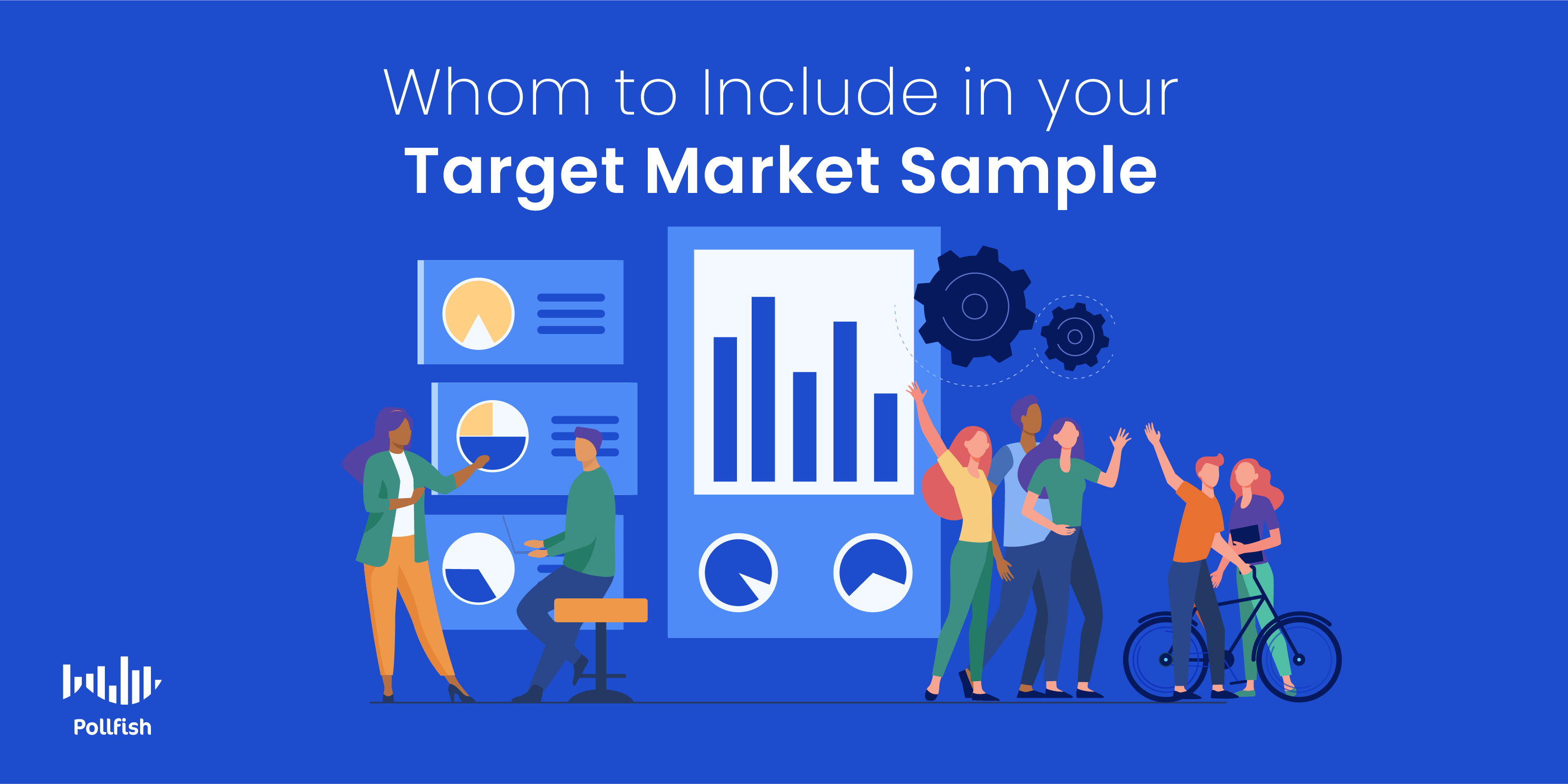
While secondary research is a good starting point, it does allow you to fully capture the makeup of your target market. Therefore secondary research alone is inadequate for obtaining your true target market sample.
Instead, you must learn who comprises your target market sample via primary research. There are various market research tools available, but they are far from equivalence.
In order to form the makeup of your target market sample, that is, before, you reach out to it for concrete marketing campaigns, you must first employ an easy-to-use tool for such a campaign, the kind that allows you to amass their key traits and preferences.
Survey research is a rescuing aid, as you can survey suspected members of your target market (based on previous secondary research) to understand them better. In such a case, you do not need to set up a strict screening portion on demographics, as you are still learning which demographics to use in your sample.
Create these initial surveys to learn more about your suspected target population. Search for trends among ages, geographic location, ethnic groups and cultures, along with lifestyles. This will help you get a feel of who is most interested in your niche and most importantly, your product, service or experience.
During your survey data analysis, segment your respondents based on their opinions, preferences and demographics information. You can disregard the demographics who show little to no interest in your offering.
Continue this process should you require market segmentation, to further organize your target market into smaller segments. Segmenting your customers is critical for providing personalization.
With these actions, you are able to identify who to include in your market research or survey sample.
How to Reach the Correct Target Market Sample
Secondary sources can appear to be arbitrary sources of research, whereas primary sources allow you to wield full control — at least they should, in market research. As such, you should conduct surveys to extract data from the correct target market sample.
Once you’ve identified your target market sample members via secondary and primary research, you can then safely conduct market research on them for a variety of macro-applications.
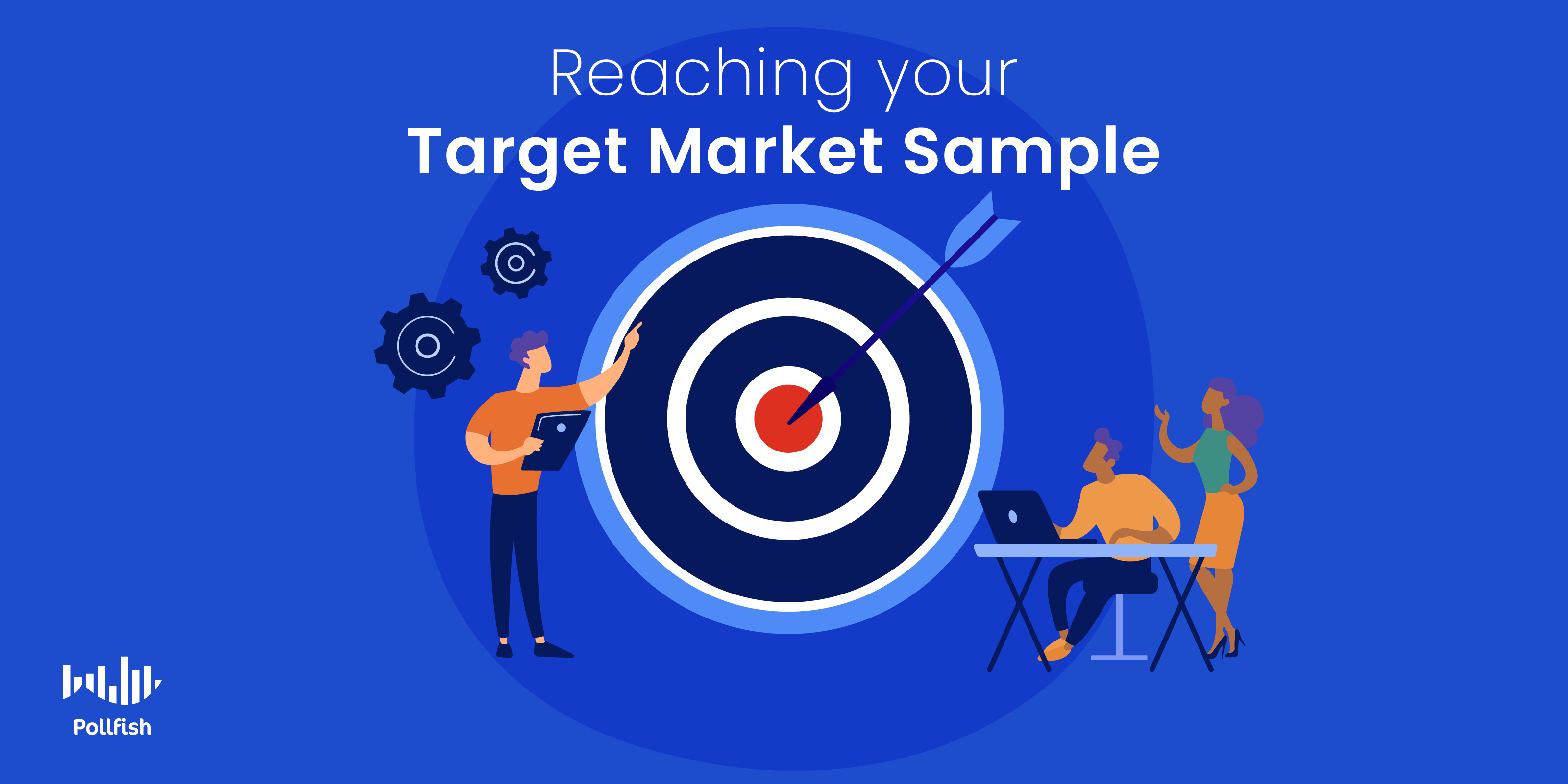 These include campaigns in the following:
These include campaigns in the following:
- customer development
- general marketing
- advertising, branding
- customer experience (CX)
- customer satisfaction
Start small by testing a general portion of your target market. This involves survey participants bound by common demographic categories. You do not need to delve into psychographic and behavioral traits just yet.
Instead, ask the more general population of your target market sample a mix of qualitative and quantitative questions. This will help you map out who they are beyond their general demographics. As such, this can be seen as an extension of determining your sample members, but to a far more precise degree.
When you get a better sense of your target market, you should then conduct more granular surveys to understand their needs. After this, you ought to create quantitative surveys in order to form statistical representations of your target market.
You can switch between quantitative and qualitative surveys, or conduct surveys that include a mesh of both. The more surveys you run on your target market sample, the more meticulously will you be able to define it.
The more accurately-defined your target market sample is, the more accurate and relevant it will be for your market research. Fortifying your market research will lead you to make better business decisions.
Satisfying to Your Customer Base
Satisfying your customer base is no easy feat. Businesses have invested long and hard into marketing. But you cannot deliver a valuable marketing campaign without understanding your target market to a T.
Thus, you need to perform continuous market research on this group of people. To do so, you must understand who constitutes your target market sample, the market research sample of your focus. A strong survey platform will help you achieve this objective.
The correct online survey platform will allow you to painlessly identify your target market sample and deploy surveys to it. After all, if you cannot reach out to your sample and extract data, then it is of no use to your business.
Thus, when you conduct market research on the members who belong in your target market sample, you will avoid useless and inaccurate research, the kind that offers no value to your company. Surveys help you ward off this risk.
The Importance of Market Research for Any Business
The Importance of Market Research for Any Business
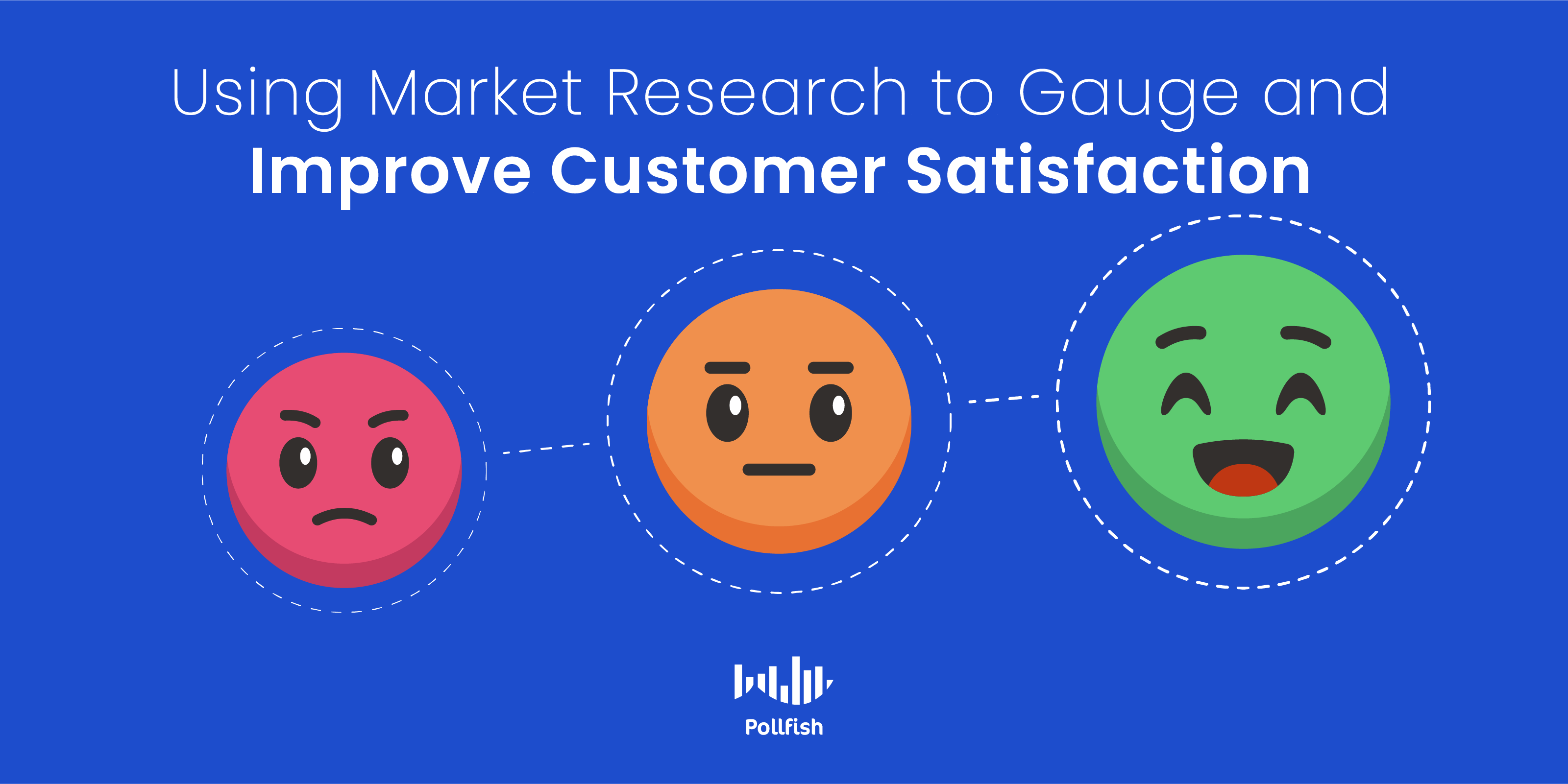
The importance of market research should not be glossed over by businesses, yet not all businesses apply it to their marketing efforts or even to their strategic planning process.
This missed opportunity has grave consequences for companies of all sizes; even large successful companies have lost billions in revenue from failing to conduct market research. Thus, all companies must conduct market research, whether they’re fledgling startups or long-established businesses.
This article expounds on the importance of market research so that businesses and researchers understand its value. It also shows how to conduct this kind of research to reach and maintain various business goals.
Defining Market Research
Market research is a specialized kind of research process; it refers to the organized methods by which an organization collects information about its target market and overall industry to inform its go-to-market gain continual intelligence on its industry at large.
Although used interchangeably with market analysis, they are not the same practice. Market analysis refers to the broader practice of studying a sector, industry or niche. This kind of analysis uses current and historical observations to make forecasts.
Market analysis primarily delves into existing business practices and products to plan for future business endeavors. Using raw data, market analysis gatherers a large supply of impersonal facts and figures. Thus this kind of research is far more general.
Make research, on the other hand, is more specialized in its design and approach, as it primarily focuses on examining a particular target market and its even more specific segments. Thus, it is far more customer-centric than market analysis.
Although the primary focus of market research is on a business’s customer base, it too involves elements of market analysis. Some market analysis projects in market research involve turning to secondary research as a means of understanding the broader environment of a market before narrowing the focus to its customer segments.
Market research can be conducted by amassing secondary resources or by conducting primary research. The latter may include using an in-house research team, which conducts market research techniques entirely on its own such as in field research, in exploratory research, experimental research or other methods.
It may also include an in-house research team that implements syndicated research or custom research. These refer to the external research methods of the receiving company, in which a market research provider conducts primary research for the business. In short, these two forms of research are a kind of outsourcing method for market research, as they represent services that extract customer data.
In syndicated research, a research project is funded by various companies and conducted by a research firm, which owns all the resulting data. Alternatively, custom research is a form of research in which a single business works with a market research provider on a project and funds it entirely on its own. Thus, the resulting data is also proprietary to the business.
The Importance of Market Research
The importance of market research is manifold. It provides various uses and can be used with multiple macro-applications and subsets of marketing, along with business needs as a whole.
The overarching umbrella of importance in market research is the ability to understand customers to the fullest extent, which includes: their needs, desires, opinions, frustrations, aversions, inclinations and other intelligence.
Understanding all of these factors in relation to a target market helps a business attract and retain customers. Both aspects are of utmost importance to a business, but customer retention is especially important, in that existing customers are far more likely to buy from a business.
In fact, the likelihood of selling to existing customers is 60% to 70%. Additionally, retained customers are 50% more likely to buy a business’s new product. Despite these figures which clearly illustrate the weight of customer retention, only 18% of businesses focus on customer acquisition, while 44% of businesses focus on customer retention.
Market research is also crucial for maintaining competitiveness. A business cannot thrive in a competitive landscape when it fails to do the necessary research to adapt to trends, new product/service upgrades and most importantly, customer needs. In fact, 9% of businesses lose their customers to their competitors when they don’t conduct market research to improve their customer loyalty and retention.
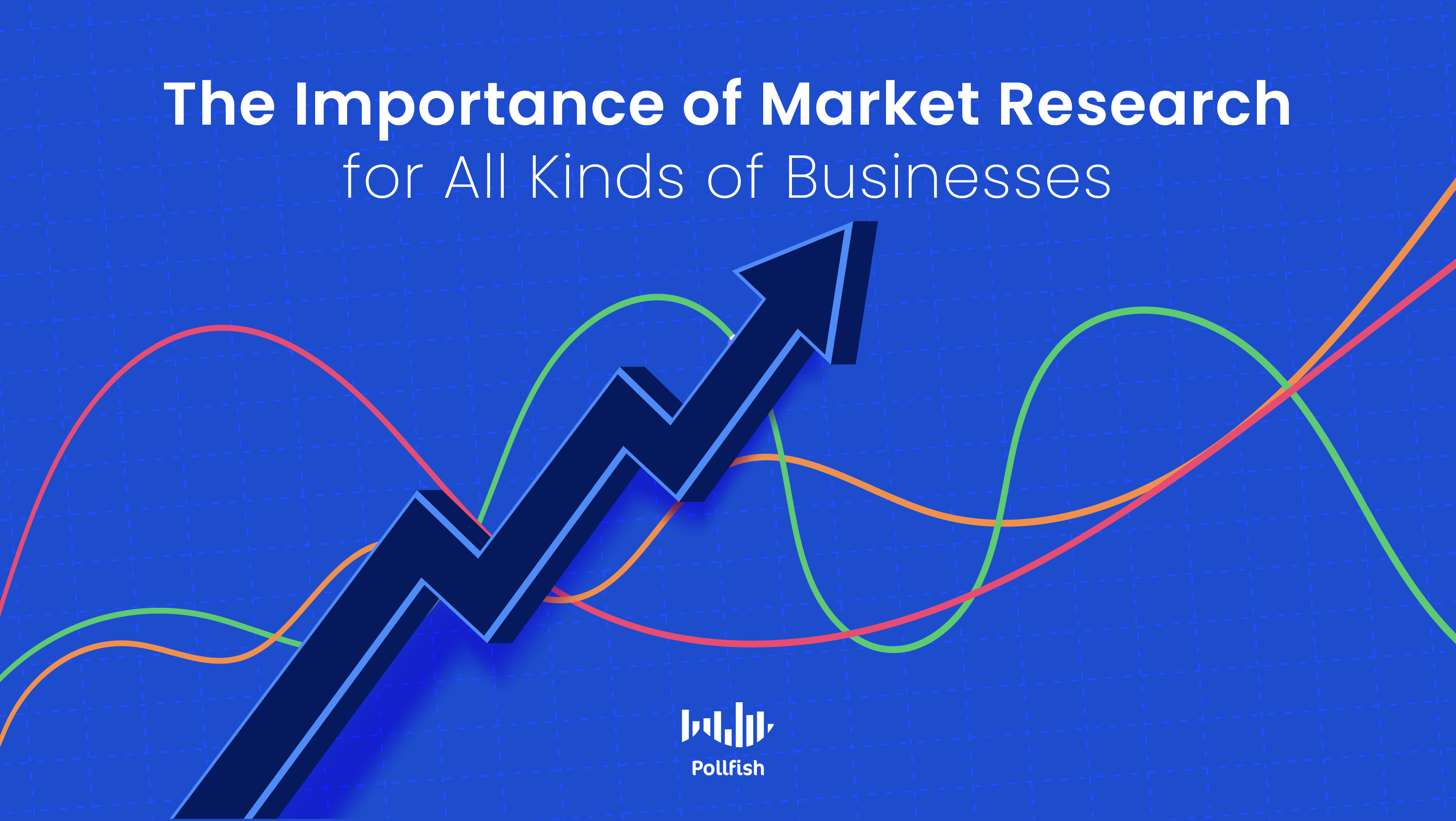
Market research helps businesses assess their customer satisfaction, whether they examine the satisfaction of existing customers or all those in their target market. As such, businesses can keep continuous tabs on customer preferences to understand how to better serve them, whether it is via products, services, customer support or digital experience (DX) across all digital channels.
Businesses can also learn customer sentiment in relation to the industry at large. This will help companies grasp their standing within their industries and in relation to their competition.
Moreover, conducting market research does not merely help businesses understand their customers' opinions and preferences. It also helps determine the exact makeup of a business’s target market via target market surveys and market segmentation. The latter identifies the subsets that make up a general target market, allowing brands to create granular messaging and campaigns to both acquire customers and retain them.
Furthermore, market research helps companies on the strategy side of a business, in that by studying their market and niche, they can devise critical documents and strategies to both launch a business, as well as propel it forward. For example, startups can use market research for business, while companies that have been in business for several years ought to use market research for their strategic planning process. The latter helps businesses map out their goals, better understand their ranking and establish practical objectives.
Finally, the customer-specific intelligence that businesses gain with market research helps support a variety of macro applications, from general marketing, to branding campaigns, to advertising projects, along with various studies such as longitudinal studies, cross-sectional studies, retrospective studies, prospective studies and others.
How to Conduct Market Research
There are many ways to conduct market research as there are various market research techniques. The two major classifications of market research are secondary and primary research.
Secondary research involves gathering and analyzing already available sources of customer data and other relevant information about a market. Secondary research can exist in a number of public resources, such as:
- Government resources: on government websites and databases
- Examples: The Census Bureau, The U.S. Small Business Administration, The Bureau of Economic Analysis and more
- Enterprise sources: trade associations, the Directory of Associations
- Research Associations: Composed of research analysts, they provide businesses with reports on specific subsectors of an industry.
- Examples: Forrester, Statista, Gartner, IBISWorldMintel: Market intelligence
- Industry blogs and content-oriented Websites: Online publications on the latest updates, trends and breaking news
- Examples: Ars Technica, The Business of Fashion, Grocery Drive, Realtor Magazine
- SEO and SEM Reporting: Tools for SEO (organic rankings efforts) and SEM (paid search)
- Examples: Ahrefs, SEMrush, etc.
Primary research refers to the various methods of amassing self-conducted research. Researchers can obtain primary research in a direct way, that is, by interviewing their target market themselves or by outsourcing.
Primary research methods include:
- Phone interviews
- In-store and in-person interviews
- Field research
- Mail-in surveys
- Focus groups
- Syndicated research
- The market research firm will be the proprietor of the extracted data
- An online survey platform
- The business is the sole owner of their extracted data
The following provides the steps that a business should take when conducting market research:

- Begin by conducting secondary research, which gives you insights into the broader market and niche. Use any of the above secondary sources, along with others.
- Look for information about the customers who belong in your target market.
- Find the patterns in your target market through the secondary sources. Keep an eye out for their demographics, psychographics, habits and behaviors.
- These will help you make hypotheses about your target market and how to best approach it for a number of campaigns.
- Next, conduct primary research via your method of choice. To do so, identify your most pressing curiosities from the secondary research you conducted.
- Tie your inquiries into a specific campaign or macro application.
- For example, do you need to conduct a longitudinal study to understand buying habits, or a study to test the effectiveness of ads?
- Conduct your primary studies with a set amount of participants.
- Surveys help you reach thousands of consumers in your target market.
- After you’ve gathered a significant amount of relevant information, perform an analysis.
- This ought to be done by more than one person within a business as different minds interpret data differently and can thus lead to different conclusions and ideas on moving forward.
- Then, ask yourself if your study is complete or you need additional data.
- If you opt for the latter, create another campaign and conduct further primary research.
- Analyze your primary data, along with your secondary data.
- Does the primary data align with the information you gathered from secondary sources? If so, it can point to repetitive behaviors or ongoing occurrences among customers.
- If not, consider the significance of the changes. Have the customers changed or has the industry changed which has led to the difference in findings.
- Additionally, primary research may not always align with secondary research, given that the business is at liberty to form its own questions and delve into its own curiosities and priorities.
- Draw conclusions and create a plan of action to reach your target market, whether it involves advertising, content strategy or any other campaign or change.
The Importance of a Strong Market Research Platform
In summary, market research is a crucial set of activities that businesses of all sizes and stages must conduct in order to better understand their industries and most importantly, their target market.
It identifies how customers view a business and allows businesses to identify and resolve gaps in customer expectations. As such, implementing a strong market research tool is an absolute must. While there are many market research tools, none are quite as potent in reaching thousands of people in a target market as online surveys.
Thus, a business should choose a robust online survey platform, one which makes it easy to design and deploy surveys, along with distributing surveys across a vast pool of digital properties. This will ensure that businesses have easy access to valuable customer data — the kind that approaches customers naturally in their digital environments, instead of being pre-recruited via email or survey panels.
How to Monitor and Increase Brand Visibility with Surveys
How to Monitor and Increase Brand Visibility with Surveys
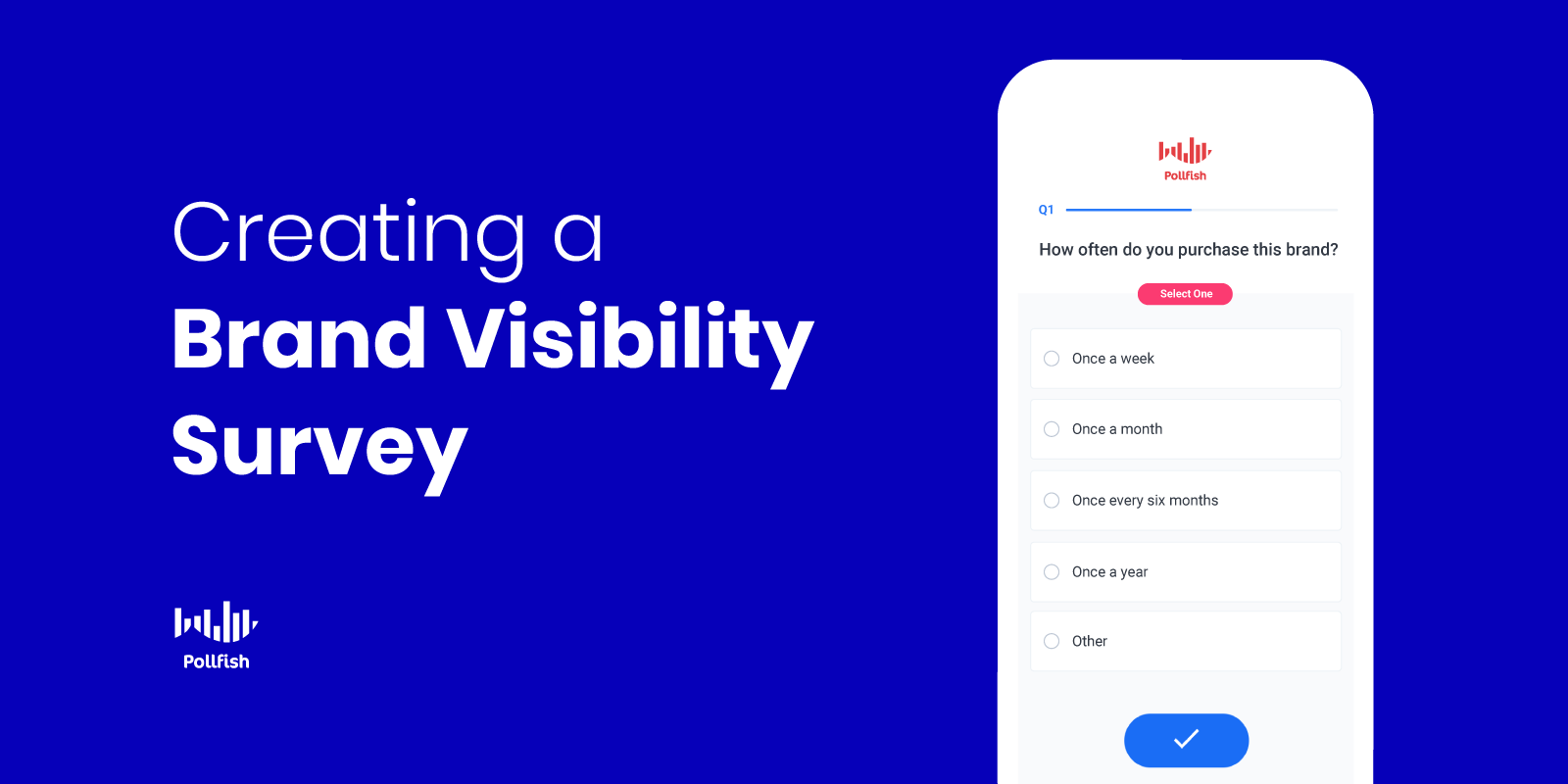
Brand visibility is a necessity for any company hoping to gain recognition within its field and compete with top players.
It is increasingly important to stand out among a crowd for businesses, as the ecommerce space is swelling to new heights; the ecommerce sector is projected to reach 4.9 billion users by 2025.
Ecommerce, in its entirety, is on the rise, as there has been a 44% increase in ecommerce sales in the previous year from the US alone.
These figures relay the presence of a wide swath of businesses and potential customers in the space. Thus, brand visibility is ever-important for a business to be noticeable by the upturn of customers.
This article explains brand visibility and its importance, along with how surveys can be used to both measure and increase brand visibility.
Understanding Brand Visibility
Brand visibility is a crucial aspect in the branding sub-discipline of marketing, but it is not a precise metric. Rather, brand visibility refers to the extent to which customers can detect and remember a brand within various environments and conditions.
An offshoot of brand awareness, brand visibility also concerns itself with those who have heard about a brand and how much they know about it.
However, rather than mainly focus on recognition and recall, the main concept of brand visibility is the condition of having keen knowledge of a brand and frequently keeping it in mind.
In order to achieve this, brand visibility also deals with the exposure of a brand. For example, a brand that can easily be found online via organic search has higher visibility than a brand that only appears on organic search when people search for it directly by name.
As a major aspect of branding market research, businesses must regularly check up on and endeavor to improve their brand visibility.
The Importance of Brand Visibility
Brand visibility, as mentioned in the above section, carries considerable weight in the discipline of branding.
But visibility goes beyond the idea behind branding alone, as it is critical for hitting performance-marketing goals. In fact, the object of many such campaigns, such as advertising and partnerships is to increase brand visibility.
As a facet of brand awareness, brand visibility is often one of the earliest stages in gaining leads. This is despite the fact that visibility is also the objective or goal of many branding and marketing campaigns.
The reason behind this phenomenon is that visibility exists in two ways:
- Visibility by first exposure
- Closely tied to brand awareness first steps (building it up)
- This helps determine whether members of the target market are good MQLs and have the potential to convert
- Continuous visibility
- The condition of having a strong awareness/knowledge of a brand
- When a brand is lodged within the minds of its target market
- One of the building blocks of brand equity, in which brands wield the power of name recognition, leading to overall success
As such, brand visibility is both a key ingredient in improving a brand’s positioning in its industry, as well as a marker of success, in that it fosters brand equity when constantly visible.
On top of this, brand visibility is also necessary for the growth of a business. Firstly, this is because brand visibility is used to gain new clients, which is critical for businesses that offer few products or services.
Secondly, the upkeep of brand visibility is also crucial for customer retention, as brands that are constantly visible to consumers have the chance to do so in a positive light, triggering consumers to favor such brands. In this way, visibility also factors into a business’s customer lifetime value (CLV).
Surveys provide a source of monitoring brand visibility, as well as a method of increasing it.
How to Foster Brand Visibility
There are various ways in which brands can work towards achieving their brand visibility goals. First off, increasing your organic rankings via SEO (search engine optimization) is a major factor in online visibility. It is especially important for acquiring new customers, as many customers first stumble upon a brand while searching for a specific product, service or even another specific brand.
Then, there is the visual aspect that is especially critical to branding. This involves logos, company color schemes and visual setups across digital and physical properties. In regards to the latter, some companies implement design specifications aside from the color scheme.
For example, some brands may include or exclude text from their hero images, or in-content images. Others may require adding specialized framing, borders or watermarks across all images. These and other visual factors establish a brand’s identity in such a way that either makes a brand stand apart from others or helps customers associate a brand with visual elements.
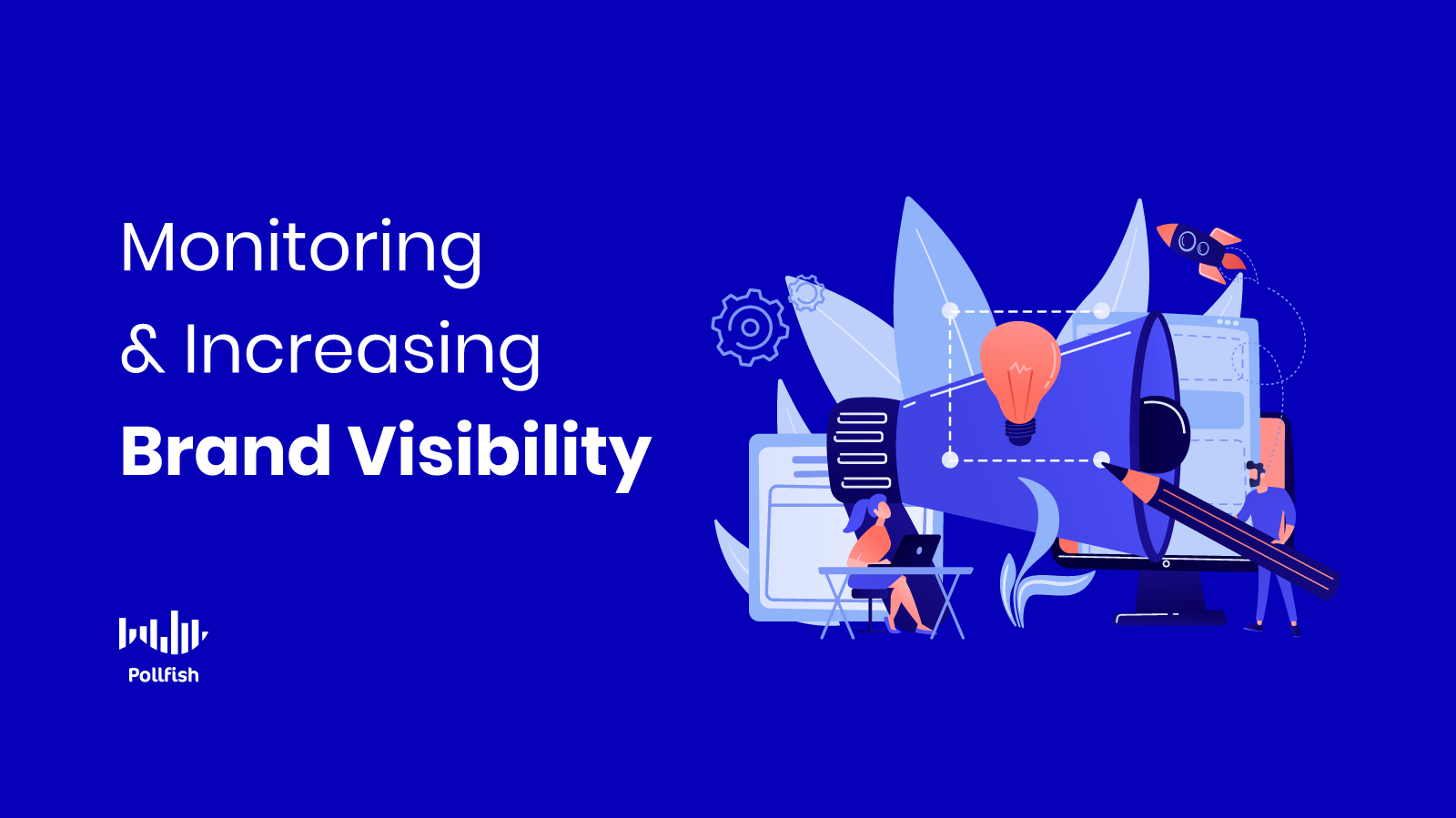
There is also the aspect of social listening as a means to monitor brand visibility across social media channels. Social listening involves tracking social media channels for mentions of your brand and product. This grants insights into how strongly your social media visibility is. It also allows brands to make improvements based on the disclosed preferences customers make on these channels.
Businesses can also forge band visibility with media placements. A PR task, these placements have traditionally been earned, but now, most businesses source a PR agency to provide these placements as another channel for brand visibility.
Or, a business itself may include a PR department that creates content, such as press releases and finds outlets and other sources to distribute the content. This, in turn, produces more digital visibility for a brand.
Aside from implementing these methods for better brand visibility, businesses can advance their brand visibility with surveys.
How Surveys Help Monitor and Raise Brand Visibility
Surveys serve a critical function in market research, as they allow businesses to conduct primary research around any topic and in any format, should the online survey platform used allow it.
Surveys help businesses understand how their brand is received and viewed, along with how visible it is. That is because they can cover virtually any topic in one iteration, or be broken up into smaller iterations that consist of several surveys.
There are various key subtopics that a brand visibility survey helps you better understand in relation to customers. First off, you can track brand recognition, which allows companies to understand whether or not their brand comes to the minds of customers when they see their product or service.
Next, there are the related topics of the brand and customer profile. When a brand changes its messaging, theme or image in general, it should track how well customers are aware of this change. Additionally, they should check whether this change has received visibility.
The same should apply to the customer profile; when your customer base changes, even to the slight degree of adding new segments with just one change (say a demographic addition), you should track this. That way, you will understand how to accommodate their needs by changing your messaging.
This kind of survey can also help you track the visibility of any other marketing campaign. For example, you can determine how many people have seen your advertisements, your video content, social media content and virtually all else.
As for increasing brand visibility, surveys that explicitly mention your brand bring more brand awareness by proxy. Additionally, the insights you derive from surveys will allow you to make informed decisions on how to increase your visibility — in a way that is appealing to your target market.
After all, visibility is important, so you must assure that the visibility your business receives is positive. Not all press is good press, so it is therefore necessary to run a brand tracking survey in addition to one that focuses on brand visibility.
How to Set Up a Brand Visibility Survey
Set up a brand visibility survey by first finding its larger purpose or purposes, prioritizing them and then organizing them into any of the topics mentioned above.
For example, decide whether you need to monitor the visibility of a new company announcement. Or, perhaps you may need to see how visible your advertisement is. Thus, each survey you create should be centered on specific topics. This will not merely organize your market research efforts, but keep your surveys short — a key best practice.
You can also design a survey for general brand visibility purposes, if you do not have a set campaign or sub-purpose to monitor for visibility.
 Then, identify the segments of your target market that you intend to study. When you use an online survey platform, you should be able to target those segments flawlessly.
Then, identify the segments of your target market that you intend to study. When you use an online survey platform, you should be able to target those segments flawlessly.
Afterward, create a set of questions based on the core concerns of your brand visibility survey. The following includes a list of question examples to use when setting up your survey.
- When you think of buying a product, which brands come to mind?
- Type of visibility question: brand recognition
- Answers: multiple-selection, with an open-ended “other” option
- Which brands do you think of when thinking about the [industry, niche]?
- Type of visibility question: brand recognition
- Answers: multiple-selection, with an open-ended “other” option
- Have you heard of [your brand name]?
- Type of visibility question: general visibility
- Answers: yes or no
- If yes, follow up with questions on the company
- If no, follow up with questions about a niche, if customers would like products that deal with issues in that niche, etc, then offer your product and ask if they’d like to learn more.
- Have you seen any of the following advertisements?
- Type of visibility question: advertising campaigns
- Answers: multiple-choice, must include images of ads
- If yes, ask questions about what respondents like/dislike about them
- What do you think of [company news/announcement]?
- Type of visibility question: company changes/ updates
- Answers: multiple choice
- Many in your target market may not have heard a particular announcement, this question will bring visibility to your news, while gauging customers' opinions on it.
Gaining More Brand Visibility for Your Business
Brand visibility is a key topic of contention in marketing, as marketing is largely bent on promoting a business in order to scale it. There are various methods businesses can apply to increase their visibility.
Some are examined in this article; there are several others that brands can attempt as a means to accelerate and augment brand visibility. In order to do so proactively, brands ought to conduct experimental research.
Consequently, surveys are the common denominator in experimental research and general market research. These tools allow brands to evaluate their target market on a variety of brand visibility-related issues.
However, in order to reap the most benefits from survey research, you must use a trusted source as your online survey platform. The strongest such platform uses RDE sampling, offers various question formats, deploys surveys across a massive network of sites, apps and other digital properties along with being able to conduct a survey in 5 easy steps.
Thus, the proper online survey tool makes all the difference in your brand visibility campaigns, allowing you to both monitor visibility, along with raising it.
New Pollfish Feature: Sequential Testing, A Variation of Monadic Testing
New Pollfish Feature: Sequential Testing, A Variation of Monadic Testing
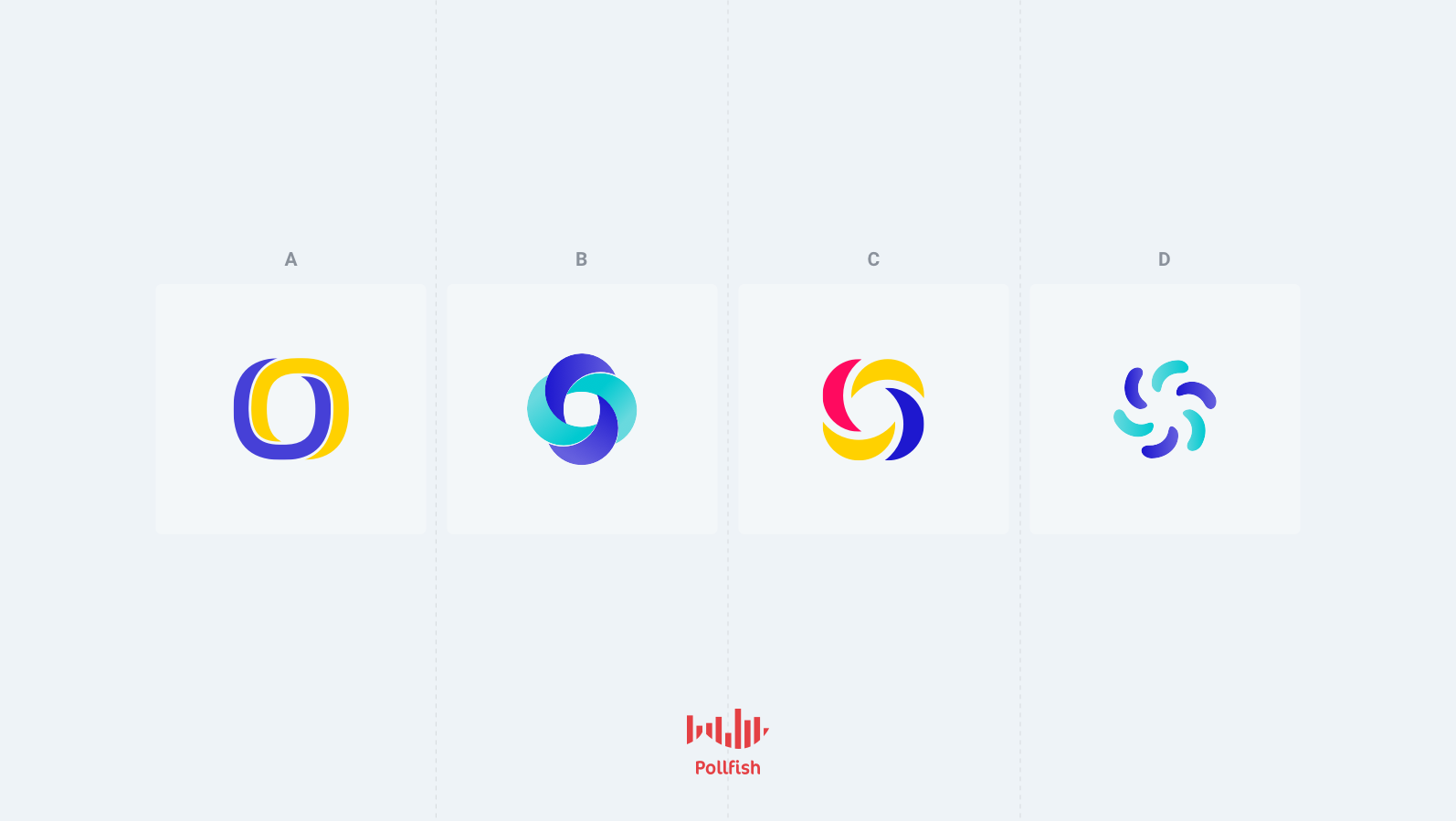
The Pollfish A/B testing functionality just keeps getting stronger; we now offer another version of it to fortify all your concept testing needs with the Sequential Testing version. In this second version of A/B testing, researchers can test multiple concepts at once, as opposed to just one with monadic.
In this second iteration, the testing is also done within one group of questions but allows researchers to test more concepts per respondent. This grants researchers added flexibility and efficiency, as only one survey can test multiple concepts.
This version is available for all accounts on the Pollfish platform.
This article explains sequential testing, how to use it in the Pollfish platform and the three versions Pollfish offers.
Understanding Sequential Testing
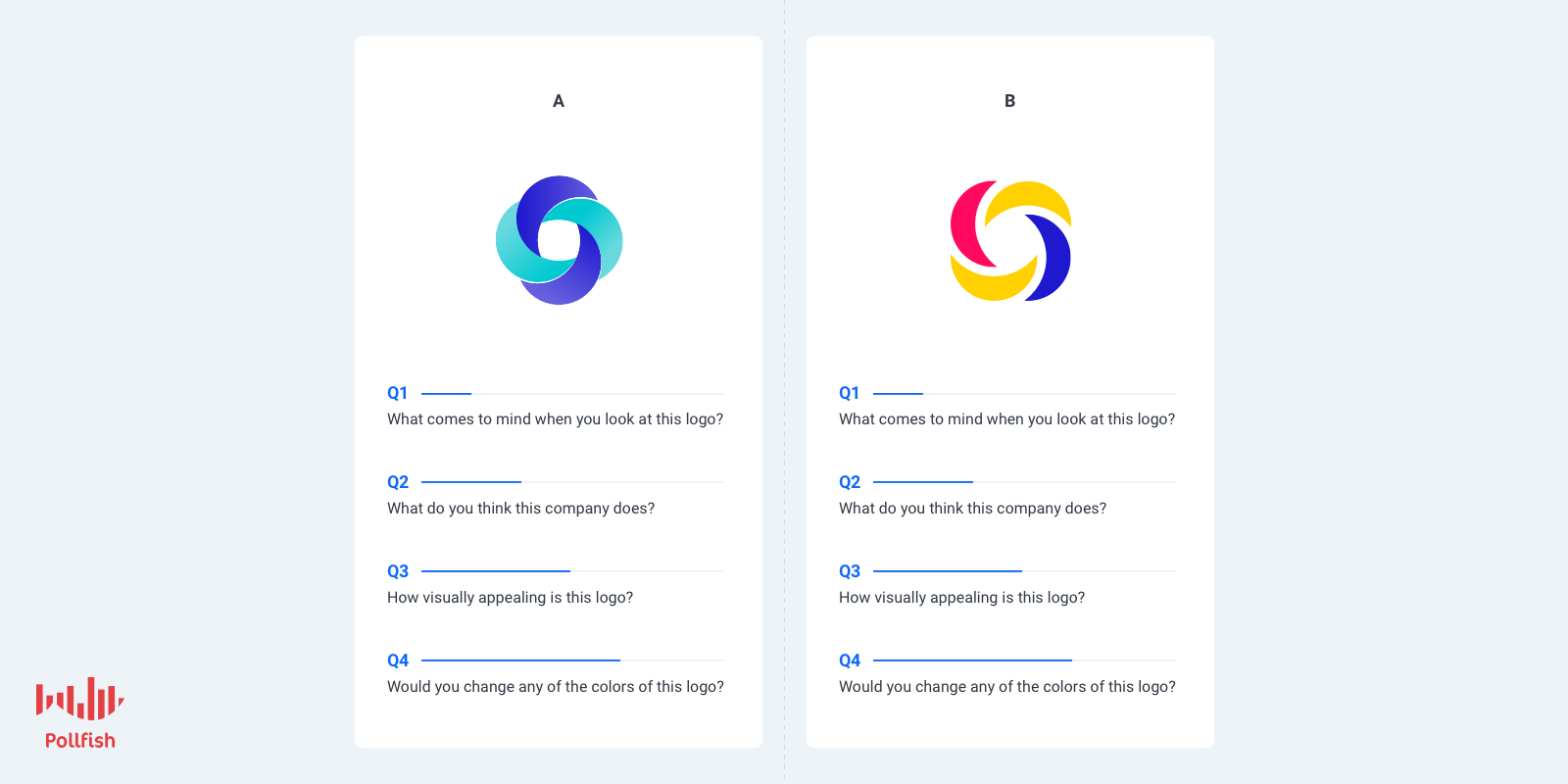
Sequential testing affects the cost of the survey by way of the following calculation:
The calculation cost formula:
(the # of questions included in the A/B test) X (# of concepts presented to the respondent)
Example:
Questions in the A/B test: 12
Number of concepts presented: 4
12 X 4 = 48
As such, in a basic plan, the CPI will be for $4 (46-50 questions) )
Question Distribution
In this version of the A/B test, concepts have a specific distribution: all possible combinations are derived from the concepts that are selected to be shown. This way, each concept is evenly distributed and presented to the respondents at equal times in the first position.
This reduces any bias that may occur from serving a concept always at the first position of a combination.
Example:
Sequential x 2 selected concepts per respondent out of 3 concepts (A, B,C)
A sampling pool of 300 respondents
We have the following combinations of 2 out of the 3 concepts:
AB, BC, AC
This means that each concept will be seen by more participants than it would in the monadic version. For the example of 300 respondents, each concept will be seen by 200 respondents or a total of 600 views for all concepts.
The distribution should take place evenly for all combinations (300 respondents / 3 combinations = 100 responses/combination)
AB or BA x 100
BC or CB x 100
AC or CA x 100
Results and Exports
The results and exports will be presented as they are in the monadic testing version. However, the difference lies in that each concept will have accrued more views and responses than it would have in the monadic version.
This is understandable, given that sequential testing involves implementing more concepts, therefore yielding more responses and combinations.
What You’ll Find in the Charts of Sequential Testing
Each question type included in a sequential test (and a monadic test) will be accompanied by a chart.
A bar chart contains columns as concepts or answers, depending on the view you select. The data from the table is used for the charts.
On the top right-hand corner of the questions you applied sequential testing to, you can check results in two ways. Just click on the “View” dropdown and choose between by concept and by results, where applicable.
Slider and numeric open-ended questions are presented with a box plot diagram, per concept.
A boxplot is a standardized way of displaying the distribution of data based on a five-number summary (“minimum”, first quartile (Q1), median, third quartile (Q3), and “maximum”). It tells you about your outliers and what their values are.
It can also tell you if your data is symmetrical, how tightly your data is grouped, and if and how your data is skewed.
Box plots are presented on the results page, as this image shows:
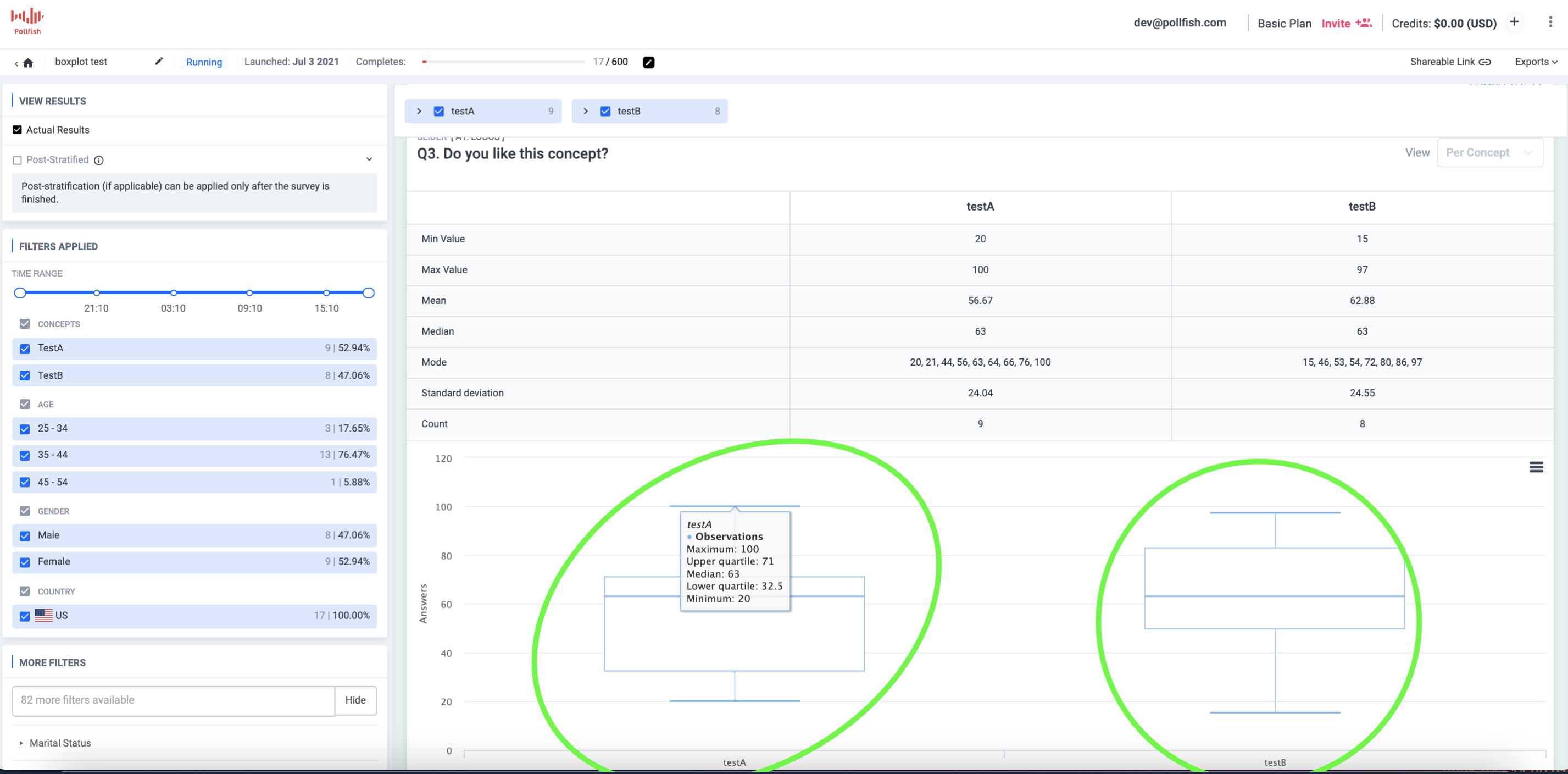
The Benefits of a Sequential Test
The main benefit of a sequential testing approach is the improved efficiency of the test. This is because, in sequential testing, each respondent views either all potential concepts or a limited number of concepts, followed by the same evaluation questions for each.
Viewing more concepts and answering for more concepts in just one survey, is far more efficient than testing individually in a non-A/B test setting.
With both monadic and sequential A/B testing, researchers can incorporate many concepts. The key difference is the mechanism that distributes these concepts. In the monadic version, each respondent views and answers for only one random concept whereas in the sequential, they view more and answer for more concepts.
As such, the sequential version grants researchers an added layer of flexibility in their concept setup.
The sequential approach is data-rich, as the Pollfish platform allows researchers to filter their data in regards to each concept, both by concept and answers. This provides a much more granular display of exactly how each concept was received. Best of all, it is provided in one place, on one page.
How to Set Up a Sequential Test
Setting up a sequential A/B test is a fairly simple task. Here are the steps to set up and use the sequential version:
- For the questionnaire, add an A/B test.
- Under “type,” select the sequential type.

- In the concepts table, add as many concepts as you need.
- You can also add attributes.
- In the number of concepts to be presented per respondent, select how many of them each respondent will view.
- (The number of concepts to be presented to the user cannot be bigger than the number of concepts in the concepts table).

- (The number of concepts to be presented to the user cannot be bigger than the number of concepts in the concepts table).
- Define the questions that will be in the test.
- Proceed to the checkout.
Innovating with Sequential Testing
This version of A/B testing is not just ideal for testing ideas, but for breeding innovation, all from one survey. This is because researchers can use sequential testing questions along with regular questions in one survey.
This allows researchers to test their concepts with each respondent, as this is a version of the monadic test.
So go ahead, use all the concepts in one test as you please, for all your market research campaign needs. Or, stick to just a few.
How to Use Data for Decision Making
How to Use Data for Decision Making
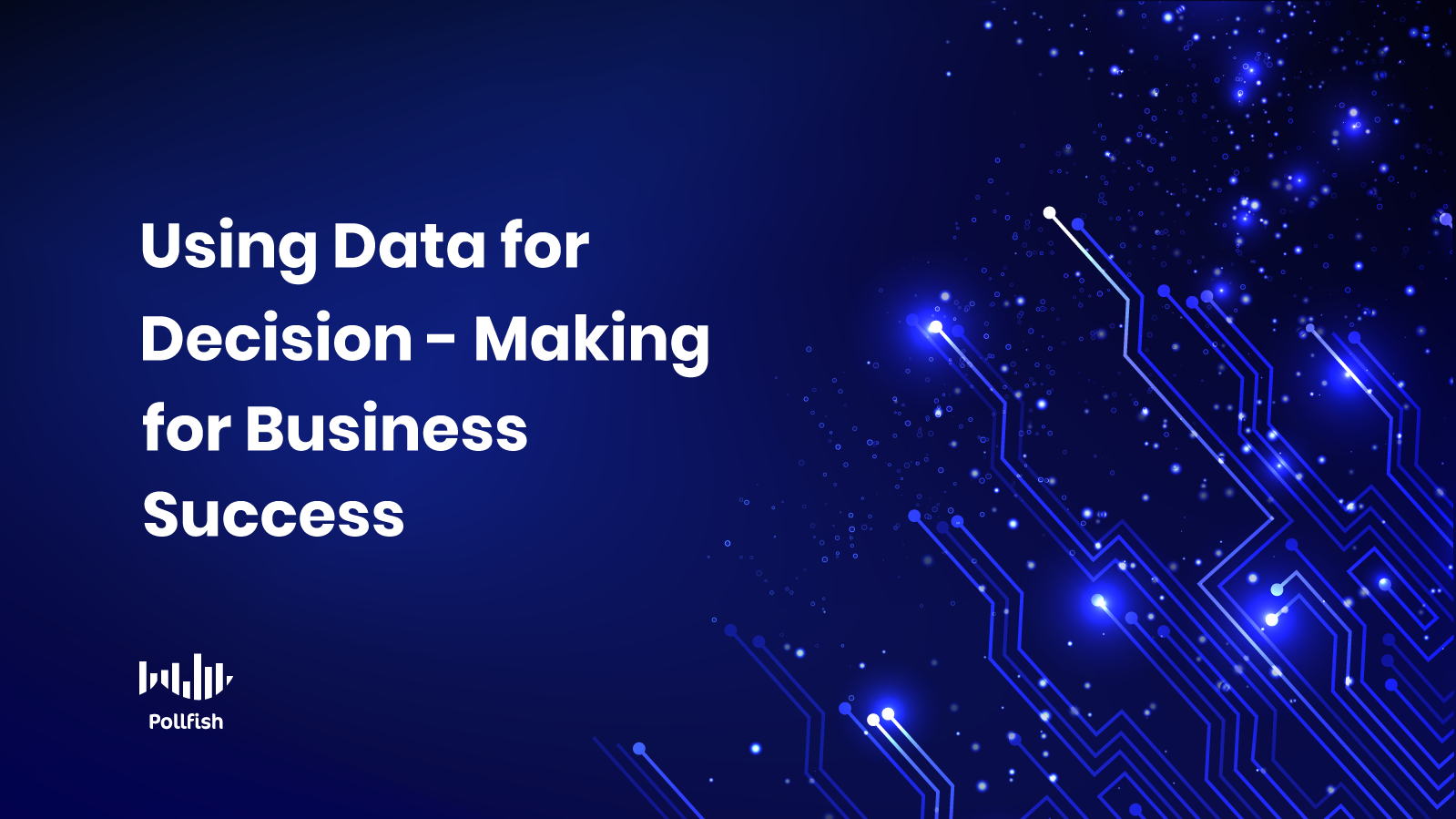
In the digital climate of the present, using data for decision-making is ever-important for businesses to thrive and remain competitive.
While the vast majority of businesses claim to be data-driven, only a small fraction of businesses actually implement data into their corporate strategy. In a recent report, 99% of businesses reported investing in data and AI, but only 30% have a data strategy for their business.
As such, even the businesses that invest in data are not using it to its full potential — if at all. Without updated data, businesses cannot stay abreast of their target market, competitors and industry at large.
This article explains how to use data for decision-making in the market research space, so that businesses can fully grasp the insights from the vast array of market research techniques.
The Value of Data in Market Research
Market research is a particularly data-driven field, as not only do consumer preferences change rapidly, but so do the consumers themselves.
The latter occurs as a target market does not remain stagnant; new segments emerge, while others may change in terms of behaviors, demographics or needs.
Thus, market researchers must always keep tabs on their target market and overall industry, as this kind of information is invaluable. Researchers should not leave any data unused, but thoroughly analyze it and incorporate all of their data for decision making.
There is virtually no other aspect in the business realm as valuable as data, especially the kind that is delivered in a timely manner with up-to-date information. When you gather the correct amount of data from the most relevant people, you are then equipped with the necessary insights to take any action or inaction.
Whether it’s changing your marketing messaging, keeping up with your brand tracking, gaining customer loyalty or even increasing your CLV (customer lifetime value), having access to the right kind of data can help you improve your business in leaps and bounds.
After all, in order to make your target market aware of your business, delight customers and retain them, you need to understand them, their needs and expectations to the fullest extent. WIthout consumer data, you are essentially navigating in the dark.
This is largely because, as aforementioned, customer preferences and the makeup of a target market is highly subject to change.
As such, aside from investing in data, businesses ought to put it to use, to strategize with their data for decision making. When businesses leave their data dormant, then they are not data-driven.
Understanding Data-Driven Decision Making
The concept of being data-driven has driven a rise in claims across businesses, yet many do not commit to a data-driven culture.
When it comes to data implementation, one study has found that 94% of businesses say that they are beyond the planning stage of implementing data into their business, yet only 38% believe it is well-connected to the corporate strategy.
In another 2021 study, 62.0% of firms reported investing over $50 million in data and artificial intelligence, yet only 30% have built a well-defined data strategy.
Evidently, there is a disconnect between investments and usage. This can occur due to a number of reasons, including lack of time allocation to strategy or in-house resources that can fully adopt and adapt to the data.
First off, before attempting to foster a data-driven company, businesses ought to understand the precise meaning behind the term “data-driven.”
This concept alludes to a process of using data for decision making, in which researchers collect data, detect patterns from the data, put together an analysis and use that analysis to make inferences about subjects — particularly your target market — that would be used for taking actions.
Data-driven decision-making (or DDDM) has thus sprung from this concept. DDDM refers to the process of making data-informed decisions rather than anecdotes, past observations or intuitions.
Instead, the data a business derives from market research is used as the primary guiding source for decisions, changes and applications.
The Benefits of Applying Data for Decision-Making
There are various benefits of being data-driven, as outlined in a previous section, especially in relation to market research. There are plenty of more concrete ways in which data benefits a business, in ways that reach far beyond decision-making alone.
 The following lists the various other benefits that businesses can reap when they take up the DDDM position:
The following lists the various other benefits that businesses can reap when they take up the DDDM position:
- Data provides crucial insights that can enhance the overall performance of a business.
- They can do so by monitoring a variety of metrics that provide actionable insights.
- The DDDM position allows businesses to make incremental changes. This forges continuous improvements on various fronts, depending on the kind of data it uses.
- It is entirely fact-based, as such, decision-making is not entirely reliant on the knowledge or skills of any team members, but rather the insights themselves.
- The facts derived from DDDM enable a greater capacity to implement changes and scale them.
- DDDM is ideal for improving staff work and engagement, as it allows for greater transparency and accountability.
- It helps businesses identify their risks and threats to tackle them sooner rather than later.
- Collecting data is necessary for record-keeping and compliance, allowing companies to be accountable when it comes to managing data.
- It allows companies to prioritize their tasks and goals and deem which are practical and which aren’t.
- Results can be measured via the data collected, which is also ideal for market research techniques, whether it comes from studying:
- Employee sentiment via an employee feedback survey
- Product opinions via the product satisfaction survey
- Customer experience (CX) via a customer experience survey
- Customer development
- Thoughts on an advertising campaign
- Brand tracking
- It allows companies to justify taking an action or change by assessing themselves and their customers, testing different methods and understanding what is most useful for their target market.
How to Use Data for Decision Making
Although data is of the essence when it comes to making results-oriented decisions, it can be overwhelming to gather and parse. When it comes to the former, a business may not know all the applicable methods for gathering data, including how to reach out to its target market to aggregate the data.
In regards to the latter, a business may experience difficulty when analyzing data, including the ways to organize it and visualize it and make the next steps.
The following explains how to use data for decision-making with the DDDM approach.
- Narrow down a goal or issue to prioritize for your data.
- List the various problems your business is facing.
- List the various curiosities your business has in regards to its campaigns or target market.
- Find one or more issues that require the most attention.
- Once you've narrowed down an issue, decide on what you need to improve, or which aspects are in want of more information.
- Find a source of data best-suited for your DDM priorities from the first two steps
- Create a preliminary budget. Then determine which tool can best fort the budget and your data needs.
- Choose from the following:
- Website analytics
- Market research
- Secondary research: various industry publications, statistics sites and other sources
- Primary research: survey tools, online panels
- CRM software
- Business intelligence platforms
- Social listening tools
- Run a campaign around your source of data.
- After you’ve gathered your first round of data, organize it in a digestible manner.
- This will largely depend on the source you use.
- This may involve working with graphs, charts spreadsheets and more.
- Analyze your data.

Consider the following:
- Did you receive answers to your concerns?
- Do you need more information? If so, run another similar data extraction campaign.
- Divide your findings in the following ways:
- Descriptive Information: Includes all the facts from the data you collected.
- Inferential Information: Includes the facts, and their interpretation within the context of a particular project.
- Predictive Information: An inference based upon facts and advice for further action based on your reasoning.
- Draw conclusions.
- What new information have you gathered from your findings?
- Create a document with the most critical information you reap and share it with your team.
- Can you apply the findings to new strategies or do you need further insights?
- Has your data analysis confirmed or disproved your hypotheses?
- What new information have you gathered from your findings?
- Strategize and plan based on your data.
- Meet with other team members to discuss plans on improving strategies or creating completely new ones based on the data you derived.
- Measure and monitor your efforts — repeat if need be.
- Data-driven decision-making (DDDM) is not a one-off method.
- Rather, it should be used continuously to make accurate assessments about your customers, business campaigns and other crucial aspects pertaining to your business.
- Consider the following: did your DDDM decision lead to a positive impact on your business?
- If yes, that’s wonderful.
- If no, not to worry. It is better to be equipped with facts for making decisions and in the vent that you didn’t drive as much positive change, you can better decide future goals and strategies.
Creating Constant Improvements
Many companies, especially those in the tech field, seek to be data-driven. While most are open to implementing data for decision-making, a fractional portion actually follows through, as aforesaid early in the article.
Companies that have lagged on fully incorporating data into their decisions are not as well-suited to make innovations, test hypotheses and fully understand their customers' behaviors and needs. On the contrary, companies that do use data for making decisions avoid the pitfalls of strategizing on intuition alone.
The key is to prioritize your goal and use the correct data-culling tool. Given the sweeping area of studies that market research encompasses, it is important to rely on primary research in order to stay abreast of the latest needs of your target market.
As such, a market research data tool, such as an online survey platform is thus paramount to use. Such a tool makes it easy to create surveys, target the desired (and correct) sample, deploy the surveys and have them completed in a timely manner.
Businesses ought to choose wisely when it comes to selecting an online survey platform, as the proper kind will drive well-informed decision-making without any hassle.





 The Detractors
The Detractors









